
- 2 Weeks for Couple
- 2 Weeks for Family
- Thailand Lantern Festival
- Indonesia(Bali)
- South Korea
- China (HK, Taiwan)
- Itinerary Ideas
- Asia Highlights Travel Reviews
- Thailand Travel Reviews
- Vietnam Travel Reviews
- Cambodia Travel Reviews
- Japan Travel Reviews
- Myanmar Travel Reviews
- China Travel Reviews


How to Plan a Trip to China and Japan
China and Japan appear frequently on Asia bucket lists: they are the top representatives of Eastern culture. Both countries are now open for travel. Experience both for rich and distinctive Oriental culture on a memorable (and romantic) big trip or a wonderful family time.
In China you can visit the well-preserved Forbidden City and Terracotta Warriors, climb the magnificent Great Wall, see the lovely round pandas, and ride a bamboo raft on the Li River... In Japan you can have an afternoon tea dressed in kimonos with beautiful geishas, visit the symbol of Japan — Mount Fuji, and stay at a traditional ryokan (inn) with an onsen (hot spring bath)...
In this article, we are going to look at how to plan your first tour of China and Japan.
- 1. Do I need a visa to visit China and Japan?
- 2. What to See in China and Japan?
- 3. How Many Days Are Needed?
- 4. How Much Do They Cost? ?
- 5. Best Times to Travel
Do I need a visa to visit China and Japan?
Japan has restored the visa-waiver system from October 11th, 2022 . If your country is in the list of Exemption of Japan Visa like Australia , Canada , USA , UK and almost all European nations , you can visit Japan without applying for a visa in advance.
China has officially announced resumption of all visas including tourist visas (L visas) from March 15th, 2023. If your 10-year China visa, obtained before COVID-19, is still within its expiration date, you can enter China now without applying for a new one.
China has also reinstated its 144-hour visa-free transit policies, which allow you to enjoy a long stopover stay (6 days) in China without a visa. This policy option currently only applies to passengers transiting through China via the following cities: Shanghai, Hangzhou, Nanjing, Beijing, Tianjin, Shijiazhuang, Dalian, and Shenyang. This policy is valid for travelers from 53 countries including the US, the UK, Singapore, and Canada.
Book a tour with us and we will provide you with the invitation letter needed to apply for a Tourist Visa.
Discover real reviews of Highlights Travel Family 's best-rated service across trusted platforms.
What to See in China and Japan?
No matter whether you're travelling for a family vacation, anniversary, or birthday, China and Japan will not disappoint you.
Top Things to Do in China
- Beijing, Shanghai, and Xi'an are must-see cities for China first-timers.
1) Maximize your experience of Chinese history and culture in Beijing (3–4 days) with a close-up tour of the Forbidden City where you'd see the best-preserved wooden palaces in China, climb the Great Wall and be a 'hero', bike through the hutongs to experience traditional Beijing, and sample Beijing Roast Duck.
2) Appreciate a striking blend of modernity and history in Shanghai (2–3 days): take a leisurely walk in Yu Garden — a classical garden built in 1559, ascend the Oriental Pearl Tower for a full view of Shanghai, and see charming night views on the Bund.
3) Discover ancient and imperial China in Xi'an (2–3 days): visit the amazing Terracotta Army, make your own terracotta warriors at a cave dwelling, and bike on the Ancient City Wall.
4) To extend your tour, maybe supplement the culture and history with some of China's natural wonders: enjoy attractive idyllic scenery in Guilin (2–3 days), see cute pandas in Chengdu (2–3 days), and visit the Hallelujah Mountains in Zhangjiajie (2–3 days)
Most of China's cities are connected by a high-speed train ride of 5 hours or less.
Suggested reading: 11-Day China Classic Tours
Top Things to Do in Japan
- Tokyo, Kyoto, and Osaka are the top cities for a first-time trip to Japan
1) Experience the highly-modernized and history-filled in Tokyo (3–4 days): sample sushi at famous Tsukiji Market, view the spectacular Mount Fuji, try on samurai armor at Samurai Museum, satisfy your children's interest in anime, and take a day tour in Hakone for hot springs.
2) Soak in the strongly-traditional atmosphere of Kyoto (3–4 days): have an afternoon tea with beautiful geishas in kimonos, participate in a classical tea ceremony, sleep on a tatami at a traditional ryokan (inn), and have a close encounter with friendly deer in Nara National Park.
3) In the flourishing trade city of Osaka (1–2 days) , you can visit outstanding Osaka Castle, sample delicious street food in Dotonbori, and have fun in Universal Studios.
Our travel consultants provide 1-to-1 service. Contact us and we'll design a fulfilling, personalized trip based on the length of your holiday, preferences, and interests.
How Many Days Are Needed?
An awesome trip full of the main highlights of both China and Japan requires at least 2–3 weeks: 8–11 days in China and 7–10 days in Japan.
China is a big country with a rich culture and attractions that deserve more time to explore. Japan is a medium-sized country that you can visit the essence of at a more relaxed pace. Below are suggested itineraries for your inspiration.
1) An itinerary full of the essence of both countries:
- Days 1–2: Shanghai, China (the Bund, the Oriental Pearl Tower, Yu Garden)
- Days 3–4: Xi'an (the Terracotta Warriors, biking on the Ancient City Wall)
- Days 5–8: Beijing (the Forbidden City, Great Wall, Summer Palace, roast duck)
- Days 9–12: Fly to Tokyo, Japan (samurai, anime, Tsukiji Market, Mount Fuji...)
- Days 13–15: Kyoto (geisha, kimonos, ryokan, tea ceremony, feed deer in Nara)
- Day 16: Osaka and departure
If you have more holiday, you can add two or three days in Guilin, Chengdu, and/or Zhangjiajie.
2) A visa-free itinerary (using the 144-hour visa-free policy in China):
- Days 1–2: Osaka, Japan
- Days 3–4: Hiroshima and Miyajima (Peace Memorial Park and Itsukushima Shrine)
- Days 5–7: Kyoto sightseeing
- Days 8–11: Explore Tokyo
- Days 12–14: Fly to Beijing, China
- Day 15: Departure from Beijing
Just let us know your interests and requirements , and we can help make it happen.
How Much Do China and Japan Cost?
A two-week trip to China and Japan costs around US$7,500–9,000.
- Private tour costs in China are about US$200–250 per day per person, and the costs in Japan are US$350–500 per day per person , including 4-star hotels, tickets for attractions, private cars and private guides.
- Prices can double in peak season, especially airfares and hotels. At peak times, we recommend you plan ahead and book flights and hotels at least 6 months in advance.
- Ryokans are a worth a night's stay to try out traditional Japanese accommodation. They cost around US$300–450 per night.
- Direct flights from Beijing or Shanghai to Tokyo are about 3½ hours and cost US$400–1,000.
Best Times to Travel to China and Japan
China (central and northern) and Japan have similar climates, with distinct seasons.
- The tourism-friendly weather and the peak season in both countries is in spring (April to May) and autumn (September to October), when there is less rain, more clear days, and comfortable temperatures. In both countries, spring is the time to appreciate flowers, like cherry blossom, pear flowers, and peach blossoms. Meanwhile, autumn is the time to enjoy red maples and golden ginkgoes. >>> How to Plan a Japan Cherry Blossom Trip
- June to August is hot and rainy in China and Japan, but it won't affect your journey. China and Japan have plenty of air-conditioned facilities, and the rain usually won't continue for too long. Summer is the festival season in Japan and there are amazing firework-shows. We recommend coming to China in June, because it is cooler and less crowded than in July and August. Our private tours come with air-conditioned cars and private guides who help to book your tickets in advance and flexibly include meaningful indoor activities to dodge the heat and downpours.
- November to March is winter in much of Japan and China, when it gets cold and dry, and some northern Chinese and Japanese cities will see snow. It's the perfect time to go skiing and see snowy scenery. Christmas and New Year is the busiest time in both countries: hotels and flights are easily booked up. Thus, we suggest you make reservation at least 6 months in advance. >>> How to Plan a Family Ski Holiday
The weather is good/okay in compromise months November and March, generally speaking, and prices are relatively cheap.
Let us help you plan your trip! Contact us and we will customize a trip based on your available time, budget, interests, and other requirements.
Suggested reading: Best (& Worst) Times to Visit Japan >>>
You Might Like to Read
- How to Plan a Trip to China and Thailand
- How to Plan a Trip to China and South Korea
Why Asia Highlights (10,000+ reviews & 98.8% 5-star rating)
- Save Your Time:
- Less research, more enjoyment!
- Real-time 1V1 expert planning
- Maximize Your Flexibility:
- Personal local guide and ride
- Explore at your own pace
- Celebrate Your Journeys:
- Specially-crafted family adventures
- Celebrate milestones with style!
Get Inspired with Some Popular Itineraries
At Asia Highlights, we create your kind of journey — your dates, your destinations, at your pace. You can have any trip tailor made for your travel.
More Travel Ideas and Inspiration
Sign up to our newsletter.
Be the first to receive exciting updates, exclusive promotions, and valuable travel tips from our team of experts.
Why Asia Highlights
Where can we take you today.
- Middle East
- African Safari
- Travel Agents
- Loyalty Program
- Our Differences
- Privacy Policy
Address: Building 6, Chuangyi Business Park, 70 Qilidian Road, Guilin, Guangxi, 541004, China

(Yicai Global) May 4 -- As Japan changed its policy to stop requiring Covid-19 tests or vaccine certificates from Chinese passengers, tourism is expected to return to normal in July, according to the largest travel agency in Japan.
Some 21.1 million international tourists will visit Japan this year, up almost seven times from last year, while the inflow of Chinese tourists will rebound from July, JTB predicted recently.
On April 29, or more than a week earlier than expected, Japan changed its entry policy so Chinese citizens no longer need to provide a negative Covid-19 test result or a vaccine certificate to board flights.
On April 28, a Chinese traveler surnamed Chen who was going to Japan, said to Yicai Global that departure lounges at the airport were not too busy, but accommodation prices in Japan have risen several times.
Chinese travelers are a lifeline for the Japanese tourism industry. In 2019, some 31.9 million foreign tourists visited Japan, and almost 53 percent of them were from China's mainland or the special administrative regions of Hong Kong and Macau, or Taiwan province, according to the Japan National Tourism Organization. Tourists coming from the mainland spent JPY1.8 trillion (USD13.4 billion) in Japan in 2019, or almost 37 percent of the total of foreign tourists.
An official from the Yokohama Culture and Tourism Bureau said to Yicai Global that more Chinese tourists should visit the city which has many stores that serve clients in several languages and accept payment in Chinese methods such as WeChat, Alipay, and UnionPay.
Editors: Shi Yi, Emmi Laine, Xiao Yi

Log in to Yicai Global
Create your account, we sent you a code, verification code, you'll need a password, find your yicai global account, enter your email, check your email, change your password, enter your new password, enter your new password again, reset your password.

Search form
You are here, chinese tourists and japan.

Chinese tourists take pictures of cherry blossoms in Japan / Toshihiro Gamo
Subscribe to our weekly newsletter to get it delivered straight to your inbox!
Because vaccines won't have sufficiently reduced covid-19's threat, Japan won't permit spectators from abroad to attend the Tokyo Olympics and Paralympics in July and August. The International Olympic Committee has pledged to vaccinate all of the competing athletes. Ticket sales help offset the cost of hosting the games and athletes will miss the fans. Beyond ticket sales (US$527 million in 2013-2016), international visitors give many businesses a boost. Apart from the USC athletes who compete (44 in Brazil in 2016, the most of any university), most of us will have to just watch on television, something the pandemic has made quite familiar.
Among the visitors not able to join the Olympics in Tokyo are many Chinese. In recent years, visitors from China to Japan made up 30% of total international arrivals. Almost 10 million Chinese visited in 2019, five times the number of Americans who went to Japan. Because of their numbers, they contributed the most to the Japanese economy, though visitors from Australia and some other countries spent more per visitor. According to Ctrip, the Chinese online travel giant, the top activities for Chinese visitors (apart from shopping) are enjoying cherry blossoms in spring and maples in fall as well as visiting hot springs, trying out kimonos, and culinary tours. 54% of visitors are in their 20s or 30s. Osaka and Tokyo are the top destinations, but Okinawa, Sapporo and Nagoya are also popular. Starting in 2019, Japan made getting visas easier for younger people.
Relations between China and Japan are far from warm, but Chinese clearly love to visit and to shop in Japan. Such visitors and exports to China (China is Japan's largest export market) have greatly boosted Japan's economy. The place of visiting Chinese in the Japanese tourism sector is illustrated in the charts below.
Click to expand

Featured Articles

Happy Year of The Dragon! 祝您龙年快乐!
Happy Lunar New Year from the USC US-China Institute!

Passings, 2023
We note the passing of many prominent individuals who played some role in U.S.-China affairs, whether in politics, economics or in helping people in one place understand the other.

From Netflix to iQiyi: As the World Turns, Serial Dramas in Virtual Circulation
Ying Zhu looks at new developments for Chinese and global streaming services.

The War for Chinese Talent in the United States
David Zweig examines China's talent recruitment efforts, particularly towards those scientists and engineers who left China for further study. U.S. universities, labs and companies have long brought in talent from China. Are such people still welcome?
Skip to content
Your browser does not support JavaScript, or it is disabled.Please check the site policy for more information.
National Report
- Korean Peninsula
- Around Asia
- Manga & Anime
The Asahi Shimbun
China lifts ban on group tours to Japan in time for summer travel
THE ASAHI SHIMBUN
August 10, 2023 at 12:08 JST

China lifted its ban on group tours to Japan on Aug. 10 after a suspension of more than three years due to the novel coronavirus pandemic.
The decision announced by China's Ministry of Culture and Tourism also covered the United States, South Korea and many European countries.
The lifting is expected to be a boon to Japan’s tourism industry as China topped both in tourist numbers and visitor spending before the pandemic.
Chinese group tours to Japan have been on hold since January 2020. Only a limited number of solo travelers have visited the country since the spread of COVID-19.
In 2019, 9.59 million Chinese tourists visited Japan, accounting for 30 percent of foreign travelers.
Tourists from China spent 1.77 trillion yen ($12.30 billion), 36.8 percent of the total spending by inbound travelers.
The per-capita spending on shopping surpassed 100,000 yen, making China the only country to exceed that lucrative threshold for retail establishments.
Japan eased border restrictions on incoming travelers in October, but Chinese tourists have been slow to return compared with other countries.
The Chinese government has continued to freeze procedures for Japan-bound group tours.
China, which substantially relaxed its zero-COVID policy in December, lifted its ban on group tours to 60 countries in two batches, but Japan has not been included.
Japan and other countries were included in the third group announced on Aug. 10.
In June, the number of Chinese tourists to Japan was about 20 percent of pre-COVID levels, although the overall entry of foreign travelers recovered to about 70 percent.
This year, flights from China increased to Tokyo and Osaka, among other major cities, and airlines are moving to reopen direct services to rural destinations.
(This article was written by Go Takahashi, Anri Takahashi and Kazuki Uechi.)
Related News

About 400,000 Chinese tourists cancel group tours to Japan

Foreign tourists shun Japan over COVID-19 rules, rising infections

Japan sets sights on wealthy visitors to increase consumption

Surge in tourists unlikely with visa, other rules still in place

Japan may let in small groups of tourists in spring in trial run

China travel ban expected to have huge impact on Japan’s economy
Trending Now

Eight injured after earthquake rocks Shikoku and Kyushu
April 18, 2024

Slush avalanche cascades down Mt. Fuji during heavy rainstorm
April 12, 2024

Collapsed houses left uncleared 100 days after Noto earthquake
Recommended

Stories about memories of cherry blossoms solicited from readers

Cooking experts, chefs and others involved in the field of food introduce their special recipes intertwined with their paths in life.

A series based on diplomatic documents declassified by Japan’s Foreign Ministry

A series on the death of a Japanese woman that sparked a debate about criminal justice policy in the United States

A series about Japanese-Americans and their memories of World War II

Here is a collection of first-hand accounts by “hibakusha” atomic bomb survivors.
Learning English
- Asahi Weekly
In-house News and Messages
- The New York Times
BACK TO TOP
- Site Policy
- Transmission of user information to external service providers(利用者情報の外部送信)
Copyright © The Asahi Shimbun Company. All rights reserved. No reproduction or republication without written permission.
The Ministry of Foreign Affairs website uses JavaScript. Please turn on "JavaScript" and use it.

Visa information for Chinese nationals
1. Visas for “short-term business affairs” or “visit to relatives/ acquaintances”
Please refer to the website of the Japanese Embassy or Consulates-General that covers the area of your residence for details.
2.Visas for Chinese group tourists and individual tourists residing in China
If the purpose of the visit is "group tourism," please apply for a group-tourism visa through an approved Chinese travel agency, who would be able to tell you what documents are necessary for the visa application. To see which travel agencies handle tourism to Japan, please refer to the web-site of the Japanese Embassy / Consulate-General in China. PLEASE NOTE that if the purpose of the visit is short-term business affairs, visiting relatives or acquaintances (including those cases where you are visiting Japan for sightseeing but staying at a house of relatives / acquaintances), you need a visa for "short-term business affairs" or "visit to relatives / acquaintances" rather than tourist visas (except Multiple-entry visas for visitors with a substantially high income). Applications should be lodged with documents provided by an "inviting person" or "guarantor" in Japan. In case the applicant is a Chinese national residing outside China, please refer to the Japanese Embassy or Consulates-General closest to the applicant’s place of residence.
(1) Group Tourists (single-entry visa)
As a general rule, tourist visits to Japan by Chinese nationals take the form of "group tours" based on the related laws and regulations of China (period of stay is up to 15 days).
If you are coming to Japan as part of a tour group operated by a tour escort through the approved Chinese travel agency, the Chinese travel agency will apply for a group tourist visa on your behalf. To find out what documents are necessary for a group-tourists visa application, please contact any approved Chinese travel agency. As a matter of information, participants in "Group Tours" are not allowed to travel on his/her own for the duration of the tour and must be accompanied by a tour escort when travelling.
(2) Individual Tourists
When certain requirements are met, visas may be issued for "individual tourists". In a "Chinese individual tour" the tourist need not be accompanied by an escort. Under this category of "Individual Tourists" visas, there are two types of visas: single-entry and multiple-entry. If you are interested in an individual tour, please apply for this type of visa through an approved Chinese travel agency. For multiple-entry visa, a Chinese travel agency must arrange the travel itinerary and reserve the accommodations for your first visit. To find out what documents are necessary for multiple-entry visas, please contact any approved Chinese travel agency for further details.
(A) Single-entry visas for Individual Tourists
Single-entry individual tourist visas (non-group tour visas) may be issued to those who have certain level of financial capability and their family members. The visas may also be issued to students (those studying in bachelor, master and doctoral degrees) or graduates (those who graduated within three years) of ordinary universities in China which are listed on the website of Ministry of Education of People's Republic of China. The period of stay allowed under this visa category is either 15 days or 30 days. The applicant seeking individual tourist visas must prepare his/her own travel itinerary in advance, approach an approved Chinese travel agency to make further arrangements for the travel, and to lodge the visa application through the travel agency.
(B) Multiple-entry visas for individual tourists visiting Okinawa / Tohoku Region (Aomori, Iwate, Miyagi, Akita, Yamagata, Fukushima)
Multiple-entry individual tourist visas may be issued to those travelers who (1) stay at least one night in either Okinawa Prefecture or any prefecture in Tohoku Region (Aomori, Iwate, Miyagi, Akita, Yamagata, Fukushima) and (2) meet the requirements described below. These visas are valid for 3 years and the period of stay allowed for each visit is up to 30 days. If the applicant meets the requirements, his/her family members may also travel with the applicant or on their own. In order to apply for these visas, the applicant must prepare his/her own travel itinerary in advance, approach an approved Chinese travel agency to make further arrangements for travel, and then lodge the visa application through the travel agency for the first visit. The applicant need not make travel arrangements through the travel agency for his/her second visit onwards.
The requirements:
(c) multiple-entry visas for individual tourists with a sufficient level of financial capability.
Multiple-entry individual tourist visas may be issued to those travelers who have a sufficient level of financial capability and their family members. The same type of visas may also be issued to those who have travel records of enter to Japan twice or more in the last three years with certain categories of individual tourist visa (group tour visa and temporary visa (Tokudai) are excluded). These visas are valid for 3years and the period of stay allowed for each visit is up to 30 days. Unlike the "Multiple-entry visas for individual tourists visiting Okinawa / Tohoku Region", the visas issued under this category imposes no requirement to visit any specific destination in Japan. The applicant seeking this type of visa must prepare his/her own travel itinerary in advance, approach an approved Chinese travel agency to make further arrangements for the travel, and to lodge the visa application through the travel agency. The applicant need not make travel arrangements through the travel agency for his/her second visit onwards.
(D) Multiple-entry visas for visitors with a substantially high income
Multiple-entry visas which are valid for 5 years and of which period of stay for each visit is allowed up to 90 days may be issued to applicants with a substantially high income and their family members who are visiting Japan for the purpose of tourism, short-term business affairs, visiting relatives or acquaintances. Those who obtained such visas are not permitted to perform business activities to generate revenue or receive any remuneration. To find out what kind of documents is necessary for this type of visa, please contact with any of approved Chinese travel agency.
3. Multiple–entry visas for Chinese visitors residing outside of China with a substantially high income or a sufficient level of financial capability
Multiple-entry visas may be issued to applicants with a substantially high income or a sufficient level of financial capability and their families. Visas for the applicants with a substantially high income are valid for 5 years and the period of stay allowed for each visit is up to 90 days, and visas for the applicants with a sufficient level of financial capability are valid for 3 years and the period of stay allowed for each visit is up to 30 days
For details, please contact the Japanese Embassy or Consulate-General that covers the area where you reside.
If the applicants reside in China, they must apply for this type of visa through an approved Chinese travel agency in China. For the documents that the applicants must prepare for application, please refer any approved Chinese travel agency. Approved Chinese travel agency can be found in the website of the Japanese Embassy or Consulates-General
- Account Details
- Newsletters
- Group Subscription
China approves Japan, U.S., other destinations for group tourism
South Korea, Australia, Myanmar, India, Pakistan, Turkey also included in list
TOKYO -- The Chinese government released a new list of destination countries for outbound group tourism, including Japan, South Korea, Australia, the U.S. and the U.K. on Thursday, a move that will give a lift to retailers and other travel-related businesses in those countries.
According to the announcement, the application process for group tours begins Thursday. New countries approved by the Chinese government include India, Pakistan, Qatar, Bangladesh, Myanmar, Lebanon, Turkey and Israel, Mexico, Germany, Finland, the Netherlands, Sweden.
Japanese shy away from foreign trips months after reopening
Japan hotel prices surge as domestic and inbound travel rebound, summer travel in japan seen beating pre-covid levels, japan-bound tourists use social media, pop culture as guides, thailand's dusit aims to double hotels to 100 worldwide by 2025, global airline shares soar on passenger demand, cheaper fuel, 21 dishes in 24 hours: china's youth embrace lightning travel, travel light: sumitomo, jal to rent clothes to japan-bound passengers, foreign tourists in a disaster-hit japan: follow drones to safety, airbnb co-founder sees private rentals easing japan's hotel crunch, latest on travel & leisure, japan-south korea travelers help incheon air traffic hit pre-covid levels, japan foreign tourists top 3m in march, fueling record spending boom, visitors to asean hit 100m in 2023, 70% of pre-covid level, sponsored content, about sponsored content this content was commissioned by nikkei's global business bureau..
Nikkei Asian Review, now known as Nikkei Asia, will be the voice of the Asian Century.
Celebrate our next chapter Free access for everyone - Sep. 30
Outlook for China tourism 2023: Light at the end of the tunnel
China is now removing travel restrictions rapidly, both domestically and internationally. While the sudden opening may lead to uncertainty and hesitancy to travel in the short term, Chinese tourists still express a strong desire to travel. And the recent removal of quarantine requirements in January 2023 could usher in a renewed demand for trips abroad.
Domestically, there are already signs of strong travel recovery. The recent Chinese New Year holidays saw 308 million domestic trips, generating almost RMB 376 billion in tourism revenue. 1 China’s Ministry of Culture and Tourism. This upswing indicates that domestic travel volume has recovered to 90 percent of 2019 figures, and spending has bounced back to around 70 percent of pre-pandemic levels. 2 McKinsey analysis based on China’s Ministry of Culture and Tourism data.
This article paints a picture of Chinese travelers and their evolving spending behaviors and preferences—and suggests measures that tourism service providers and destinations could take to prepare for their imminent return. The analyses draw on the findings of McKinsey’s latest Survey of Chinese Tourist Attitudes, and compare the results across six waves of surveys conducted between April 2020 and November 2022, along with consumer sentiment research and recent travel data.
From pandemic to endemic
By January 8, 2023, cross-city travel restrictions, border closures, and quarantine requirements on international arrivals to China had been lifted. 3 “Graphics: China’s 20 new measures for optimizing COVID-19 response,” CGTN, November 15, 2022; “COVID-19 response further optimized with 10 new measures,” China Services Info, December 8, 2022; “China reopens borders in final farewell to zero-COVID,” Reuters, January 8, 2023. This rapid removal of domestic travel restrictions, and an increase in COVID-19 infection rates, likely knocked travel confidence for cross-city and within-city trips. Right after the first easing of measures, in-city transport saw a marked drop as people stayed home—either because they were ill, or to avoid exposure. Subway traffic in ten major cities in mainland China fell and then spiked during Chinese New Year in February. Hotel room bookings also peaked at this time.
Domestic airline seat capacity experienced a minor rebound as each set of restrictions was lifted—suggesting a rise in demand as airlines scheduled more flights. Domestic capacity fluctuated, possibly due to the accelerated COVID-19 infection rate and a temporary labor shortage. International seat capacity, however, continued to climb (Exhibit 1).
By Chinese new year, China was past its infection peak—and domestic tourism recovered strongly. For instance, Hainan drew 6.4 million visitors over Chinese New Year (up from 5.8 million in 2019) and visits to Shanghai reached 10 million (roughly double 2019 holiday figures). 4 China’s Ministry of Culture and Tourism. Overall, revenue per available room (RevPAR) during this period recovered and surpassed pre-pandemic levels, at 120 percent of 2019 figures. 5 STR data. Outbound trips are still limited, but given the pent-up demand for international travel (and the upswing in domestic tourism) the tourism industry may need to prepare to welcome back Chinese tourists.
Tourism players should be ready for this; the time to act is now.
A demand boom is around the corner—Chinese tourists are returning soon
Before the pandemic, Chinese tourists were eager travelers. Mainland China had the largest outbound travel market in the world, both in number of trips and total spend. 6 World Tourism Organization (UNWTO) Tourism dashboard, Outbound tourism ranking. In 2019, Mainland Chinese tourists took 155 million outbound trips, totaling $255 billion in travel spending. 7 China’s Ministry of Culture and Tourism. These figures indicate total outbound trips, including to Hong Kong and Macau. China is also an important source market for some major destinations. For instance, Chinese travelers made up 28 percent of inbound tourism in Thailand, 30 percent in Japan, and 16 percent of non-EU visitors to Germany. 8 United Nations World Tourism Organization (UNWTO) database.
Leisure travel was the biggest driver of China’s outbound travel, representing 65 percent of travelers in 2019. In the same year, 29 percent of travelers ventured out for business, and 6 percent journeyed to visit friends and relatives. 9 Euromonitor International database.
Our most recent Survey of Chinese Tourist Attitudes, conducted in November 2022, shows that Chinese tourists have retained their keen desire to explore international destinations. About 40 percent of respondents reported that they expect to undertake outbound travel for their next leisure trip.
Where do these travelers want to go?
The results also indicate that the top three overseas travel destinations (beyond Hong Kong and Macau) are Australia/New Zealand, Southeast Asia, and Japan. Overall, respondents show less interest in travel to Europe than in previous years, down from 7 percent to 4 percent compared to wave 5 respondents. Desire to embark on long-haul international trips to Australia/New Zealand increased from 5 percent to 7 percent, and North American trips from 3 percent to 4 percent since the last survey. The wealthier segment (monthly household income over RMB 38,000) still shows a high interest in EU destinations (13 percent).
There are stumbling blocks on the road to recovery
While travel sentiment is strong, other factors may deter travelers from taking to the skies: fear of COVID-19; the need for COVID-19 testing which can be expensive; ticket prices; risk appetite of destination countries; and getting a passport or visa.
Chinese travelers may favor domestic trips, even if all outbound travel restrictions are removed, until they feel it is safe to travel internationally. A COVID-19-safe environment in destination countries will likely boost travelers’ confidence and encourage them to book trips again. 10 “Long-haul travel barometer,” European Travel Commission, February 1, 2023.
Travel recovery is also dependent on airline capacity. Some international airlines might be slow to restore capacity as fleets were retired during COVID-19 and airlines face a shortage of crew, particularly pilots. Considering that at the time of writing, in April 2023, international airline seat capacity has only recovered to around 37 percent of pre-pandemic levels, travelers are likely to face elevated ticket prices in the coming months. For instance, ticket prices for travel in the upcoming holidays to popular overseas destinations such as Japan and Thailand are double what they were in 2019. 11 Based on Ctrip prices. Price-sensitive travelers might wait for ticket prices to level out before booking their overseas trips.
Chinese airlines, however, appear more ready to resume full service than their international counterparts —fewer pilots left the industry and aircraft are available. Chinese carriers’ widebody fleets are mostly in service or ready to be redeployed (Exhibit 2).
Moving forward, safety measures in destination countries will affect travel recovery. Most countries have dropped testing requirements on arrivals from mainland China, and Chinese outbound group travel has resumed but is still limited to selected countries.
Many Chinese travelers—maybe 20 percent—have had passports expire during the COVID-19 period, and China has not been renewing these passports. Renewals are now possible, but the backlog will slow travel’s rebound by a few months. 12 Steve Saxon, “ What to expect from China’s travel rebound ,” McKinsey, January 25, 2023. Furthermore, travel visas for destination countries can take some time to be processed and issued.
Taken together, these factors suggest that the returning wave of Chinese travelers may only gather momentum by the Summer of 2023 and that China’s travel recovery will likely lag Hong Kong’s by a few months.
Overall, China is opening up to travel, both inbound and outbound—all types of visas are being issued to foreign visitors, and locals are getting ready to travel abroad. 13 “China to resume issuing all types of visas for foreigners,” China Briefing, March 14, 2023.
Would you like to learn more about our Travel, Logistics & Infrastructure Practice ?
The returning chinese traveler is evolving.
Although Chinese travelers did not have opportunities to travel internationally over the past three years, they continued to travel domestically and explore new offerings. Annual domestic trips remained at around 50 percent of pre-pandemic levels, amounting to 8.7 billion domestic trips over the past three years. 14 China’s Ministry of Culture and Tourism. During this time, the domestic market matured, and travelers became more sophisticated as they tried new leisure experiences such as beach resorts, skiing trips, and “staycations” in home cities. Chinese travelers became more experienced as thanks to periods of low COVID-19 infection rates domestically they explored China’s vast geography and diverse experiences on offer.
Consequently, the post-COVID-19 Chinese traveler is even more digitally savvy, has high expectations, and seeks novel experiences. These are some of the characteristics of a typical traveler:
- Experience-oriented: Wave 6 of the survey shows that the rebound tourist is planning their trip around experiences. Outdoor and scenic trips remain the most popular travel theme. In survey waves 1 to 3, sightseeing and “foodie” experiences were high on the list of preferences while traveling. From waves 4 to 6, culture and history, beaches and resorts, and health and wellness gained more attention—solidifying the trend for experience-driven travel. Additionally, possibly due to the hype of the Winter Olympics, skiing and snowboarding have become popular activities.
- Hyper-digitized: While digitization is a global trend, Chinese consumers are some of the most digitally savvy in the world; mobile technologies and social media are at the core of daily life. COVID-19 drove people to spend more time online—now short-form videos and livestreaming have become the top online entertainment options in China. In the first half of 2022, Chinese consumers spent 30 percent of their mobile internet time engaging with short videos. 15 “In the first half of the year, the number of mobile netizens increased, and short videos accounted for nearly 30% of the total time spent online,” Chinadaily.com, 27 July 2022.
- Exploration enthusiasts: Chinese travelers are also keen to explore the world and embark on novel experiences in unfamiliar destinations. Survey respondents were looking forward to visiting new attractions, even when travel policies limited their travel radius. Instead of revisiting destinations, 45 percent of respondents picked short trips to new sites as their number one choice, followed by long trips to new sites as their second choice.
Consumers are optimistic, and travel spending remains resilient
McKinsey’s 2022 research on Chinese consumer sentiment shows that although economic optimism is seeing a global decline, 49 percent of Chinese respondents reported that they are optimistic about their country’s economic recovery. Optimism had dropped by 6 percentage points since an earlier iteration of the survey, but Chinese consumers continue to be more optimistic than other surveyed countries, apart from India (80 percent optimistic) and Indonesia (73 percent optimistic) (Exhibit 3). 16 “ Survey: Chinese consumer sentiment during the coronavirus crisis ,” McKinsey, October 13, 2022.
Chinese consumers are still keen to spend on travel, and travel spending is expected to be resilient. Wave 6 of the tourist attitude survey saw 87 percent of respondents claiming that they will spend more or maintain their level of travel spending. Moreover, when consumers were asked “which categories do you intend to splurge/treat yourself to,” travel ranked second, with 29 percent of respondents preferring travel over other categories. 17 “ Survey: Chinese consumer sentiment during the coronavirus crisis ,” McKinsey, October 13, 2022.
Against this context of consumer optimism, the wave 6 tourist attitude survey results shed light on how travelers plan to spend, and which segments are likely to spend more than others:
- The wealthier segment and older age groups (age 45-65) show the most resilience in terms of travel spend. Around 45 to 50 percent of travelers in these two groups will spend more on their next leisure trip.
- The wealthier segment has shown the most interest in beach and resort trips (48 percent). Instead of celebrating Chinese New Year at home with family, 30 percent of Chinese travelers in the senior age group (age 55-65) expect to take their next leisure trip during this holiday—10 percent more than the total average. And the top three trip preferences for senior travelers are culture, sightseeing, and health-themed trips.
- When it comes to where travelers plan to spend their money on their next trip, entertainment activities, food, and shopping are the most popular categories. These are also the most flexible and variable spending categories, and there are opportunities to up-sell—attractions, food and beverage, and retail players are well positioned to create unique and unexpected offerings to stimulate spending in this area (Exhibit 4).
Independent accommodation is gaining popularity
Overall, Chinese consumers have high expectations for products and services. McKinsey’s 2023 consumer report found that local brands are on the rise and consumers are choosing local products for their quality, not just for their cheaper prices. Chinese consumers are becoming savvier, and tap into online resources and social media to educate themselves about the specific details and features of product offerings. 18 Daniel Zipser, Daniel Hui, Jia Zhou, and Cherie Zhang, 2023 McKinsey China Consumer Report , McKinsey, December 2022.
Furthermore, 49 percent of Chinese consumers believe that domestic brands are of “better quality” than foreign brands—only 23 percent believe the converse is true. Functionality extended its lead as the most important criterion influencing Chinese consumers, indicating that consumers are focusing more on the functional aspects of products, and less on emotional factors. Branding thus has less influence on purchasing decisions. 19 Daniel Zipser, Daniel Hui, Jia Zhou, and Cherie Zhang, 2023 McKinsey China Consumer Report , McKinsey, December 2022.
These broader consumer sentiments are echoed in the travel sector. Chinese travelers pay attention to cost, but do not simply seek out the lowest prices. While 17 percent of wave 6 respondents are concerned about low prices, 33 percent are on the hunt for value-for-money offerings, and 30 percent prefer good discounts and worthwhile deals.
And consumer sentiment regarding local brands holds true for travel preferences. Independent travel accommodation continues to be the preferred choice for most respondents, increasing in share against international chain brand hotels (Exhibit 5). Almost 60 percent of respondents prefer independent accommodation such as boutique hotels, B&Bs, and Airbnb—an 8 percentage-point increase since 2020.
Local chain brand hotels remain stable, the favored accommodation for 20 percent of respondents. These hotels are seen as a more standardized option, and as most are located in urban areas, they target the budget traveler segment.
Opting for independent accommodation is not considered a trade down; Chinese travelers expect a high level of service. In particular, respondents in the wealthier segment picked independent options (57 percent) over international premium brands (27 percent).
Premium independent options for the wealthier segment are abundant, specifically in leisure travel. Setting up a premium brand hotel requires long-term construction periods and heavy capital investment. Small-scale boutique hotels or B&Bs, on the other hand, are more agile solutions that can ramp up in the short term. This may explain the abundance of premium independent offerings. For instance, in destinations such as Lijiang and Yangshuo, between seven and nine of the top-ten premium hotels listed on Ctrip are independent boutique hotels.
Premium independent accommodation’s strength lies in quality guest experience with a genuine human touch. The service level at premium independent establishments can even surpass that of chain brand accommodation thanks to the high staff-to-room ratio, which easily reaches 3:1 or even 5:1. 20 “Strategic marketing analysis of boutique hotels,” Travel Daily , June 3, 2015. For hotels in Xiamen, Lijiang, and Yangshou, Ctrip service ratings of premium independent hotels are all above 4.7, outperforming international chain brand hotels.
Travelers are becoming smarter and more realistic during hotel selection, focusing on fundamental offerings such as local features and value for money. Across all types of hotels, local features are one of the most important factors influencing hotel selection—even for chain brand hotels which have a reputation for mastering the standardized offering. On average, 34 percent of respondents report that local features and cultural elements are the key considerations affecting their choice of hotel.
Outbound Chinese tourists are evolving rapidly, becoming increasingly diverse in their travel preferences, behaviors, and spending patterns. Chinese travelers are not homogeneous, and their needs and preferences continue to evolve. Therefore, serving each group of tourists may require different product offerings, sales channels, or marketing techniques.

The path toward eco-friendly travel in China
How international travel and tourism can attract outbound chinese travelers.
China’s lifting of travel restrictions may cause some uncertainty in the short term, but a promising recovery lies ahead. Chinese tourists have maintained a strong desire to travel internationally and are willing to pay for this experience. They are also discerning and looking for high-quality accommodation, offerings, and service. As boutique hotels are becoming more popular, international hotel brands hotels could, for example, aim to stand out by leveraging their experience in service excellence.
With renewed travel demand, now may be the time for international travel and tourism businesses to invest in polishing product offerings—on an infrastructural and service level. Tourism, food and beverage, retail, and entertainment providers can start preparing for the rebound by providing unique and innovative experiences that entice the adventurous Chinese traveler.
Craft an authentically local offering that appeals to experience-driven Chinese travelers
Chinese travelers have suspended overseas trips for three years, and are now looking to enjoy high-quality experiences in destinations they have been to before. They also want to do more than shopping and sightseeing, and have expressed willingness to spend on offerings geared towards entertainment and experience. This includes activities like theme parks, snow sports, water sports, shows, and cultural activities. Authentic experiences can satisfy their desire for an immersive foreign experience, but they often want the experience to be familiar and accessible.
Designing the right product means tapping into deep customer insights to craft offerings that are accessible for Chinese travelers, within a comfortable and familiar setting, yet are still authentic and exciting.
Travel and tourism providers may also have opportunities to up-sell or cross-sell experiences and entertainment offerings.
Social media is essential
Social media is emerging as one of the most important sources of inspiration for travel. Short video now is a major influence channel across all age groups and types of consumers.
Tourist destinations have begun to leverage social media, and short video campaigns, to maximize exposure. For example, Tourism Australia recently launched a video campaign with a kangaroo character on TikTok, and overall views soon reached around 1.67 billion.
The story of Ding Zhen, a young herder from a village in Sichuan province, illustrates the power of online video in China. In 2020, a seven-second video of Ding Zhen turned him into an overnight media sensation. Soon after, he was approached to become a tourism ambassador for Litang county in Sichuan—and local tourism flourished. 21 “Tibetan herder goes viral, draws attention to his hometown in SW China,” Xinhuanet, December 11, 2020. Another Sichuan local, the director of the Culture and Tourism Bureau in Ganzi, has drawn visitors to the region through his popular cosplay videos that generated 7 million reviews. Building on the strength of these influential celebrities, visitor numbers to the region were said to reach 35 million, more than two-and-a-half times 2016 volumes. 22 “Local official promoting Sichuan tourism goes viral on internet,” China Daily, June 17, 2022; “The Director of Culture and Tourism disguises himself as a “Swordsman” knight to promote Ganzi tourism,” Travel Daily , June 17, 2022.
Online travel companies are also using social media to reach consumers. Early in the pandemic, Trip.com took advantage of the upward trend in livestreaming. The company’s co-founder and chairman of the board, James Liang, hosted weekly livestreams where he dressed up in costume or chatted to guests at various destinations. Between March and October 2020, Liang’s livestreams sold around $294 million’s worth of travel packages and hotel room reservations. 23 “Travel companies adapt to a livestreaming trend that may outlast the pandemic,” Skift, October 26, 2020.
Livestreaming is being used by tourism boards, too. For instance, the Tourism Authority of Thailand (TAT) collaborated with Trip.com to launch a new campaign to attract Chinese tourists to Thailand as cross-border travel resumed. The broadcast, joined by TAT Governor Mr Yuthasak Supasorn, recorded sales of more than 20,000 room nights amounting to a gross merchandise value of over RMB 40 million. 24 “Trip.com Group sees border reopening surge in travel bookings boosted by Lunar New Year demand,” Trip.com, January 13, 2023.
International tourism providers looking to engage Chinese travelers should keep an eye on social media channels and fully leverage key opinion leaders.
Scale with the right channel partners
Travel distribution in China has evolved into a complex, fragmented, and Chinese-dominated ecosystem, making scaling an increasingly difficult task. Travel companies need to understand the key characteristics of each channel type, including online travel agencies (OTAs), online travel portals (OTPs), and traditional travel agencies as each target different customer segments, and offer different levels of control to brands. It also takes different sets of capabilities to manage each type of distribution channel.
Travel companies can prioritize the channels they wish to use and set clear roles for each. One challenge when choosing the right channel partner is to avoid ultra-low prices that may encourage volume, but could ultimately damage a brand.
Meanwhile, given the evolution of the postCOVID-19 industry landscape and rapid shifts in consumer demand, travel companies should consider direct-to-consumer (D2C) channels. The first step would be selecting the appropriate D2C positioning and strategy, according to the company’s needs. In China, D2C is a complicated market involving both public domains (such as social media and OTA platforms) and private domains (such as official brand platforms). To make the most of D2C, travel companies need a clear value proposition for their D2C strategy, whether it be focused on branding or on commercial/sales.
Create a seamless travel experience for the digitally savvy Chinese tourist
China has one of the most digitally advanced lifestyles on the planet. Chinese travelers are mobile-driven, wallet-less, and impatient—and frequently feel “digitally homesick” while abroad. Overseas destinations and tourism service providers could “spoil” tech-savvy Chinese travelers with digitally enhanced service.
China’s internet giants can provide a shortcut to getting digital services off the ground. Rather than building digital capabilities from scratch, foreign tourism providers could engage Chinese travelers through a platform that is already being used daily. For example, Amsterdam’s Schiphol Airport provides a WeChat Mini Program with four modules: duty-free shopping, flight inquiry, information transfer, and travel planning. This contains information about all aspects of the airport, including ground transportation and tax refund procedures.
Alibaba’s Alipay, a third-party mobile and online payment platform, is also innovating in this space. The service provider has cooperated with various tax refund agencies, such as Global Blue, to enable a seamless digitized tax refund experience. Travelers scan completed tax refund forms at automated kiosks in the airport, and within a few hours, the refunded amount is transferred directly to their Alipay accounts. 25 “Alipay and Global Blue to make tax refunds easy for Chinese tourists,” Alizila, June 23, 2014.
Such digital applications are likely to be the norm going forward, not a differentiator, so travel companies that do not invest in this area may be left behind.
Chinese travelers are on the cusp of returning in full force, and tourism providers can start preparing now
With China’s quarantine requirements falling away at the start of 2023, travelers are planning trips, renewing passports and visas, and readying themselves for a comeback. Chinese tourists have not lost their appetite for travel, and a boom in travel demand can be expected soon. Though airlines are slow to restore capacity, and some destination countries are more risk averse when welcoming Chinese travelers, there are still options for Chinese tourists to explore destinations abroad.
Tourism providers can expect to welcome travelers with diverse interests who are willing to spend money on travel, who are seeking out exciting experiences, and who are choosing high-quality products and services. The returning Chinese traveler is digitally savvy and favors functionality over branding—trends suggest that providers who can craft authentic, seamless, and unique offerings could be well positioned to capture this market.
Guang Chen and Jackey Yu are partners in McKinsey’s Hong Kong office, Zi Chen is a capabilities and insights specialist in the Shanghai office, and Steve Saxon is a partner in the Shenzhen office.
The authors wish to thank Cherie Zhang, Glenn Leibowitz, Na Lei, and Monique Wu for their contributions to this article.
Explore a career with us
Related articles.

- Travel Planning Guide
A Travel Comparison for Vacations, Honeymoons, and Tours Japan vs. China
Should you visit japan or china, which country is cheaper, china or japan.
Should I visit Japan or China? This is a popular question for many travelers. By figuring out which country is more expensive, you'll understand where you'll get more bang for your buck. A week in China can cost you about $556 (per person), while a week in Japan may cost you around $855. These differences become even more noticable if you plan to spend a longer time in the country. 10 days , two weeks , or even one month of travel to China or Japan can really add to your travel budget.
Accommodation is often cheaper in China compared to Japan ($34 vs. $58). Budget travelers usually stay in less expensive hostels and guest houses, while nicer hotels often appeal to families and upscale travelers.
Or, compare hostel and guesthouse prices between China and Japan to find the cheapest accommodation here: China hostels and Japan hostels .
When comparing food in Japan vs. China they are not just different in cuisine, but also in price. Meal and restaurant costs in Japan ($30) are often cheaper than China ($23).
- Japan Prices China Prices
- Average Daily Cost Per person, per day Japan $ 122 China $ 79
- Accommodation Hotel or hostel for one person Japan $ 58 China $ 34
- Accommodation Typical double-occupancy room Japan $ 116 China $ 68
- Local Transportation Taxis, local buses, subway, etc. Japan $ 18 China $ 16
- Food Meals for one day Japan $ 30 China $ 23
- Entertainment Entrance tickets, shows, etc. Japan $ 19 China $ 17
- Alcohol Drinks for one day Japan $ 15 China $ 11
- Water Bottled water for one day Japan $ 4.42 China $ 0.99
How much are flights to Japan and China?
The price of a plane ticket may help you decide which country you should visit.
Find a Hostel in Japan or China
Hostels, guest houses, and locally owned B&B's are often the cheapest form of accommodation.
Related Articles for Japan
Related articles for china, when is the best time to visit japan and china.

Why is Japan more expensive than China?
What are the most expensive and cheapest cities and regions in japan and china.

How you can save money when visiting Japan and China?
Subscribe to our newsletter.
By signing up for our email newsletter, you will receive occasional updates from us with sales and discounts from major travel companies , plus tips and advice from experienced budget travelers!


More Country Comparisons
Pin this page.

- Privacy / Terms of Use
- Activities, Day Trips, Things To Do, and Excursions
- Consulates in Japan
Chinese Embassy in Japan

Consular Office of Chinese Embassy in Japan
Location: 4-6-6 Higashigotanda, Shinagawa Ward, Tokyo Tel: +81-03-6450-2196 Email: [email protected] [email protected] for consular protection
Notice on Chinese Visa Application Service Center (CVASC)
However, for those who hold Diplomatic, Service or Official passports, they should go to the embassy like before to submit the application directly.
Besides, the CVASC also provides document authentication at a certain cost.
Basic Information of the CVASC in Tokyo
Notice: If the applicant wants to use the express or rush service, the application should be submitted to the CVASV before 11:30am.
Visa Exemption
Consular districts of the embassy/consulate, china visa fees (in japanese yen), japanese , us citizens, serbia, israel, brazil, argentina & panama, citizens of other countries, japan profile.
Capital : Tokyo Currency : Japanese Yen.
Language : Official language is Japanese. Service industry staff such as those working in hotels, restaurants, and stations are often able to speak some basic English. However, the general population rarely uses English. Population : 126 million (as of March 2021), with a population density that is the second highest in the world, at 7.5 times the average global density. The aging of the Japanese society is a serious issue, and Japan ranks first in the world with a life expectancy of 83.4 years per capita. Geography :
- Japan is an East Asian country located northeast of mainland China, east of the Korean Peninsula, and south of Siberia.
- Consisting of thousands of islands that form an arc-shaped chain, it is completely surrounded by the sea and does not have any land connection with any other country.
- Earthquakes and volcanic eruptions happen frequently in this country as it is located at the intersection of four tectonic plates. Among all the earthquakes in the world, approximately 20% of them occur in Japan's vicinity.
- The time zone in Japan is UTC+9.
Climatic feature : Japan features a temperate maritime climate with distinct difference in temperature between the four seasons. March to April when the cherry blossoms, and October to November when the leaves turn to red, is the best time to take a Japan tour . Transportation :
1. It is convenient to reach Japan from any corner of the world. Currently, Japan has international flights to over 150 cities worldwide. A direct flight from Japan to China takes only 2 - 4 hours. Therefore a Japan and China tour is a perfect choice for those who want to explore both countries.
We've detected unusual activity from your computer network
To continue, please click the box below to let us know you're not a robot.
Why did this happen?
Please make sure your browser supports JavaScript and cookies and that you are not blocking them from loading. For more information you can review our Terms of Service and Cookie Policy .
For inquiries related to this message please contact our support team and provide the reference ID below.
- Philippines
- New Zealand
- Netherlands
- United Kingdom

Asia has long been regarded by travelers from all over the world as one THE best continents to visit. Southeast Asia in particular is an incredibly popular region, but we think the somewhat overlooked (and magical countries) of East Asia deserve to be on your bucket list too! China and Japan are two of the most well-known countries in the area and while they are relatively close to each other, each has its own individual charm.
We totally get that not everyone has the time or budget to go galavanting around the globe, so every once in a while, you may find yourself torn between two awesome destinations. In this case, China or Japan? We’re going to be straight with you, it is not an easy choice! Both countries have delicious food, breathtaking landscapes, and are a LOT of fun… all the hallmarks of a great vacation (how will we ever choose???).
If you’re pulling your hair out because you simply can’t decide, worry not, because we’ve got you covered! Keep reading as we compare attractions, accommodation, food, nightlife, and more, to see which country comes out on top as our overall winner!
Table of Contents
China vs Japan: Accommodation
You will find some seriously great places to stay in both China AND Japan. However, Japan overall has more choice. There are roughly 26,000 properties listed on Booking.com for Japan, whereas in China, there are only around 12,250 properties. Both countries have one to five-star hotels available, but China has a lower proportion of one-star hotels and a much higher proportion of five-star hotels.
Find A Travel Buddy!
There is a range of property types in both countries. You’ll find beach resorts by the ocean, high-rise hotels in big cities, and guest houses in smaller towns. Overall, the selection is great in both places. Japan is famous for its uber-cool and futuristic capsule hotels. They contain pods that act as self-contained hotel rooms, with a bed, lights, and maybe even a TV if you’re lucky. This one in Tokyo is giving us some serious sci-fi vibes and is worth checking out!
China has its fair share of unique properties too. This property in Hunan Province has an incredible clear dome for rent which sits on a private platform in the forest canopy (#goals). If that wasn’t baller enough, it is right on the doorstep of Zhangjiajie National Forest Park, the location that inspired the movie Avatar’s “Hallelujah Mountains” *jaw drops*
Winner: Draw – It’s a tie! Even though China has fewer choices, both countries have a wide range of properties to choose from, as well as some unique ones to make your getaway extra memorable.
China vs Japan: Food
Food, food, glorious good. It’s safe to say that you will NOT go hungry in either China OR Japan, and nor will you be disappointed by the local cuisine. Both Chinese and Japanese food are famous worldwide for being mouth-wateringly delicious, so, you can’t really go wrong with trying some authentic dishes, can you? Different regions in Japan and China are famous for different dishes. For the best Peking duck, head to Beijing and more specifically Beijing Da Dong. Tokyo is the most famous place in Japan for what’s considered the “original” style of ramen, but if you love miso-broth ramen as much as we do, then you should head to Sapporo.
In China, you will be able to find vegetarian and vegan-friendly food. A proportion of the population is Buddhist and many practice vegetarianism or veganism. However, you will still have to look a little harder than in Western countries. Be prepared to eat a LOT of tofu, since they don’t have the vast number of meat-free alternatives we are used to in the West. Japanese diets are heavily centered around seafood, so while you can easily avoid meat and dairy, finding vegetarian or vegan dishes will be more difficult. Even meals that seem free of meat and other animal products, can have non-vegetarian/vegan-friendly stocks and sauces, so be wary.
Winner: Draw – What can we say, it’s another draw folks. Both countries have ridiculously awesome food, BUT, if you’re a vegetarian or vegan, China may just sneak ahead to take first prize!
China vs Japan: Price
Sadly, for most of us, price plays a huge role in where we decide to go on vacation. Of course, if you’re a massive shopaholic and love eating out at fancy restaurants, your holiday will definitely cost more. But what about those on a budget? Which is cheaper, China or Japan? Japan already has a bit of a reputation for being pricey, especially in Tokyo, so it may not be the ideal place to go if your purse strings are tight.
According to budgetyourtrip.com, the average tourist spends 130 USD a day in Japan, compared to 72 USD a day in China! That means a one-week vacation in Japan will set you back over 900 USD, whereas a similar trip in China will cost just over half of that at around 500 USD.
One of the main reasons why Japan is so expensive compared to China is its location. Japan is a group of islands so many of its everyday goods are imported, raising the prices. Furthermore, the Tokyo Metropolitan Area is also one of the most densely populated metropolitan areas in the world! So, this explains the steep rental prices and maybe the popularity of capsule hotels.
Winner: China – China is our hands-down winner when it comes to price, we love you Japan, but why do you have to be so hard on our wallets???
China vs Japan: Getting around
When it comes to getting around China and Japan, there are some similarities, but there are some differences too. China is a hell of a lot bigger than Japan. Simply put, it’s MASSIVE. Not so simply put, China covers an area of just under 9.6 million km². Japan on the other hand is just under 378 thousand km², although its various islands should be taken into consideration, as this makes getting around more complicated.
Due to its sheer size, the best and most convenient way to travel long distances in China is by airplane. But, if you’re on a budget or have a little more time, bullet trains are also a great way to travel between cities. In Japan, traveling by train is by far the most popular option. They also have bullet trains (or Shinkansen) linking major cities, but their other rail services are comfortable, clean, and can go through some very scenic routes *cue Studio Ghibli background music*.
For longer journeys, like Tokyo to Sapporo, they also have overnight sleeper trains! To reach farther-flung destinations or islands like Okinawa air travel is definitely the way to go, but booking in advance will save you a lot of money, so some degree of planning is required!
Winner: Japan – We just can’t get the image of a cute little train bumbling through the Japanese countryside out of our heads.
China vs Japan: Climate
China is HUGE (read: above), which means the country has a wide range of climates. There’s even a freaking desert in China, yep, a desert! Generally speaking though, winters in China are freezing in the north, and much more mild in the south. The entire country, except for mountain peaks and highlands, is hot over the summer and summer is by far the rainiest season! Japan follows a very similar pattern, in that wintertime is cold, snowy, and icy in the north, temperate in the center, and subtropical in the far south. The whole country is prone to the monsoon season which brings torrential rains in summer and fall.
Both countries have areas that experience snowfall in winter, and skiing is a popular past-time for locals and tourists, with numerous ski resorts available to choose from. China and Japan also have sub-tropical/tropical climates in the south, with some amazing beaches and coral reefs too!
Winner: Draw – It has got to be a draw. We’re talking about TWO countries where you can ski in the winter and snorkel in the summer. It doesn’t get much better than that…
China vs Japan: Top attractions
It’s time to talk TOP attractions, and if our decision wasn’t already hard enough… both China and Japan have some once-in-a-lifetime sights! These include historical and natural attractions, with a bonus furry, little (or should we say… giant ) friend! One of THE top things to see in Japan, and its most famous landmark is Mount Fuji. It is recognized worldwide and in summer, over one million people climb to its summit as a pilgrimage of sorts. To rival this, China’s most well-known landmark is the Great Wall of China. It hardly needs an introduction, but the wall spans over 6,000 kilometers with some parts dating as far back as the 7th century BC. Now that’s old.
However, without a doubt, one of our favorite must-sees in China is the giant pandas! The Sichuan Giant Panda Sanctuaries are home to over 30% of the world’s population and the Chengdu Giant Panda Breeding and Research Base is a top place to see these amazing creatures while supporting their conservation. Our “thing you cannot miss” in Japan, is the iconic sakura or cherry blossoms. In springtime parts of the country are transformed into a sea of pink as the cherry trees bloom. It’s a truly magical time, but prices can skyrocket so beware!
Winner: China – Boy it was tough, but the giant pandas definitely pushed China towards victory!
China vs Japan: Nightlife
Neither China or Japan is particularly well-known in Asia for their nightlife . However, just because the after-hours scene is a little different from what we’re used to, doesn’t mean it should be overlooked!
Drinking and eating are an important part of Japan’s nighttime culture, with many people heading to an izakaya, the country’s version of a British pub or Spanish tapas bar, after work. They tend to serve small, inexpensive dishes like edamame or grilled meat to be eaten alongside beer, sake, umeshu (plum wine), and shochu (a local spirit). For a more lively night out, you can head to a karaoke venue (karaoke was invented in Japan), or check out museums, aquariums, and theme parks, many of which stay open until 9 or 10pm!
In China, aside from a normal “night out”, you can also enjoy something a little different when it comes to evening entertainment. You could find yourself spending the evening at the colorful Chinese opera, watching an acrobatic performance, or like in Japan, singing your heart out at karaoke! Eating is also a big deal in Chinese nighttime culture, and there are plenty of fantastic night markets all over. The Donghuamen Night Market in Beijing is even considered one of the best night markets in the world!
Winner: Draw – They both sound hella fun tbh…
China vs Japan: Capital cities
Beijing or Tokyo… Now that is the question. Both of these cities have got to be amongst some of the liveliest in the world. They’re rich in history, culture, and house some of the country’s top attractions. Beijing is cheaper than Tokyo, with a meal at a mid-range restaurant for two costing on average 40 USD in Beijing versus 53 USD in Tokyo. However, if we remove price as a factor, both cities have a lot going for them and are equally matched.
Beijing houses the Forbidden City, the Summer Palace, and the Great Wall which is easily accessible from the city. It also has the biggest tea market in north China on Maliandao street. Over 900 vendors sell pretty much any type of tea imaginable, if you’re a tea-lover, it’s a MUST. Tokyo on the other hand not only has historical buildings like the imperial palace but has several famous districts known for their weird and wacky culture! Harajuku is a renowned fashion district and is an insight into Japanese pop culture, with kawaii fashion stores, manga shops, and cute cafes. Shibuya is one of the most well-known shopping areas and is home to the Shibuya Crossing which is famous worldwide.
Winner: Tokyo – it’s wacky, it’s wonderful, we love it.
China vs Japan: The final verdict
You’ve made it this far, and now for our final verdict… Drum roll pleaaaaase… It’s a draw ! Yes, that’s right, we simply cannot decide. Both countries are so full of life, culture, and not to mention have GREAT food. Whether you visit China or Japan, you’ll have a blast. Although, if Japan was a little cheaper, it may have just nabbed the top spot!
Destinations
- North America
- South America
- Group Tours
- Cookie Policy
- Privacy Policy
- Terms & Conditions
© 2022 Journeying The Globe. All Rights Reserved.
Got a Travel Question?
Ask questions, get inspired, and plan your next adventure with us! Join our free Facebook group for travelers and connect with a global network of passionate explorers.
JOIN FOR FREE
- Asia Briefing
- China Briefing
- ASEAN Briefing
- India Briefing
- Vietnam Briefing
- Silk Road Briefing
- Russia Briefing
- Middle East Briefing
China’s Tourism Sector Prospects in 2023-24
Amid the post-pandemic recovery, China’s tourism sector is rebounding with vigor in 2023. We discuss the resurgence of outbound and domestic travel, evolving traveler behavior, and tech-enabled trends in this article. From cultural exploration to wellness escapes and digital integration, the stage is set for foreign businesses and investors to seize opportunities in this transformed landscape.
After enduring the significant impacts of the COVID-19 pandemic, China’s tourism sector is gearing up for a strong resurgence in 2023. Projections indicate that the total revenue from domestic tourism is expected to exceed RMB 4 trillion (approximately US$580.96 billion), marking an impressive 96 percent growth. Several driving forces contribute to this revival in China’s tourism landscape, including:
- Easing of travel restrictions;
- Increase in disposable income among Chinese consumers; and
- Growing popularity of domestic tourism.
In particular, the government’s support in revitalizing the tourism sector is evident through subsidies and tax exemptions provided to tourism enterprises. The robust resurgence of China’s tourism industry also serves as a positive indicator for the nation’s economy, with tourism being a significant driver of economic growth and expected to contribute notably to the country’s GDP. Overall, 2023 has seen a continuous stream of new policies, products, technologies, concepts, trends, and opportunities impacting the tourism industry.
China’s evolving tourism landscape
Insights from outbound tourism in h1 of 2023.
Both outbound and inbound tourism markets in the first half of 2023 have shown impressive vitality, surpassing the levels observed in the same period of 2019. Average expenditures for outbound travelers have exhibited a notable increase, with Hong Kong and Macao leading the resurgence of outbound tourism. The total number of inbound and outbound individuals has surged by approximately 170 percent.
Data from the World Tourism Alliance’s reports, reveal that the outbound tourism sentiment index reached 28 percent in the first half of 2023, marking a 21-point increase from the same period in 2019. The outbound tourism market has displayed a gradual “U-shaped” recovery, emphasizing a steady resurgence rather than an abrupt rebound.
According to recent data from Alipay’s Overseas Spending Platform, the average expenditure per user for outbound travel in the first half of 2023 grew by 24 percent compared to 2019. Among popular destinations, the top 10 outbound travel destinations in terms of transaction volume for the first half of 2023 were:
- South Korea;
- United Kingdom; and
This data is supported by several favorable policies. Since the beginning of the year, the National Immigration Administration has continuously optimized and adjusted inbound and outbound management policies.
Starting from February 20, 2023, mainland cities within the Greater Bay Area initiated a pilot implementation of visa endorsements for cross-border talent to and from Hong Kong and Macao. On May 15, 2023, policies such as the nationwide implementation of group travel endorsements for mainland residents traveling to Hong Kong and Macao were fully restored.
The streamlined and optimized policies for travel to Hong Kong and Macao prompted provinces across the mainland to organize multiple tour groups, leading to a consistent rise in mainland visitors to these regions. According to data released by the Hong Kong Tourism Board, nearly 13 million visitors arrived in Hong Kong in the first half of 2023, of which approximately 10 million were mainland visitors, accounting for around 77 percent of the total.
Furthermore, based on recent data released by the National Immigration Administration, the first half of 2023 witnessed a total of 168 million inbound and outbound individuals passing through China’s immigration, marking a year-on-year increase of 169.6 percent.
At the same time, approximately 42.798 million entry and exit permits for travel to and from Hong Kong, Macao, and Taiwan were issued, indicating a significant 1509 percent increase compared to the same period in 2022.
These figures further underline China’s promising revival in outbound tourism. Indeed, Chinese tourists have once again become a significant force driving global tourism and offline consumption.
In terms of outbound travel numbers, the top 10 departure cities were: Shenzhen, Shanghai, Guangzhou, Beijing, Hangzhou, Foshan, Dongguan, Zhuhai, Chengdu, and Wuhan. This highlights that outbound travel is mainly concentrated in first-tier and new first-tier cities, with the “Guangzhou-Shenzhen-Foshan-Dongguan-Zhuhai” Greater Bay Area cities also playing a pivotal role in outbound tourism.
The primary reason driving Chinese tourists to travel abroad is leisure, with business and visiting friends and relatives (VFR) as the subsequent motivations. The rapid expansion of outbound tourism from China can be attributed to the rising incomes of the middle class , the growing desire among Chinese travelers to explore diverse countries and cultures, and the ease of obtaining visas and fulfilling entry criteria for various destinations.
Moreover, the retail sector captures the largest portion of Chinese tourists’ spending when traveling abroad and is anticipated to retain its dominant position in terms of outbound tourism expenditure over the projected timeframe.
The steady recovery of outbound tourism
Initial expectations for a robust rebound in outbound tourism this year have encountered a more precarious reality. Notable evidence of this transformation is seen in the changing preferences of Chinese leisure travelers. As reported by CNBC, the desire to travel abroad has surged from 28 percent to 52 percent among Chinese leisure travelers since last year, nearly doubling.
Business travel intentions have tripled, and interest in education, family visits, and medical tourism abroad is also on the rise. Other findings align, revealing that 50 percent of Chinese travelers plan to journey internationally within the next year.
A significant shift has also occurred in travel fears, particularly concerning Covid contraction. While it topped travelers’ concerns in 2022, it has diminished to the least worrisome aspect this year, as per Morning Consult’s survey. This shift reflects growing traveler confidence. Factors influencing this gradual recovery go beyond preferences. A recent report from the Mastercard Economics Institute reveals a shift in Chinese residents’ spending patterns.
Known for their shopping inclination, there’s a rising trend toward investing in experiences over possessions, particularly in a zero-Covid environment. Despite global economic uncertainties, Asia-Pacific’s, including China’s, travel recovery remains steady. As travel capacity grows, costs are anticipated to decrease, fueling a more dynamic travel landscape.
Contrary to an instant “boom,” China’s international travel revival is unfolding steadily. Though not as swift as initially projected, the evolving interests, changing attitudes, and gradual shift toward experiential spending all point to a growing and adaptive outbound tourism sector, offering a promising glimpse into the future.
The Chinese government’s recent efforts to revive outbound group travel
China’s Ministry of Culture and Tourism recently expanded outbound group tour destinations, including popular places like Japan and the US. A recent analysis provided by the EIU indicates that this move will aid global tourism recovery, benefiting countries with simplified visa procedures.
While the relaxed restrictions will moderately boost outbound tourism, obstacles and cautious spending persist. Nonetheless, domestic travel agencies are expected to see increased revenue, leading to employment and income growth in the sector.
However, challenges such as limited flights and labor shortages could hinder outbound tourism’s full recovery. A complete relaxation of restrictions is predicted in late 2023, but pre-pandemic outbound levels might not return until 2025.
Domestic tourism is thriving
In the first half of 2023, domestic tourism revenue (total tourist spending) reached RMB 2.3 trillion (approx. US$318 billion), marking a substantial increase of RMB 1.12 trillion (approx. US$155 billion) compared to the previous year. Notably, urban residents’ expenditures on travel accounted for a year-on-year surge of 108.9 percent, while rural residents’ travel spending grew by 41.5 percent.
The remarkable rebound of China’s domestic tourism sector can be attributed to a set of factors that differentiate it from the relatively slower recovery of outbound tourism. For one, the domestic tourism industry appears to be less affected by uncertainties surrounding employment and income growth compared to other service and retail sectors.
This is primarily due to the strong yearning of Chinese consumers to explore after years of mobility limitations imposed by the pandemic.
On the other hand, the prolonged revival of outbound flights has further bolstered the domestic tourism scene. Many individuals redirected their travel plans within China as international travel remained limited.
Notably, the return of international air traffic to approximately 80 percent of pre-pandemic levels is not expected until the fourth quarter of 2023, which creates a favorable environment for the vigorous resurgence of domestic tourism in the meantime.
Changing Chinese travelers’ preferences in 2023
In the wake of the COVID-19 pandemic and the subsequent travel restrictions, Chinese travelers underwent a transformation in their preferences and behaviors. Over the past three years, while international travel remained limited, domestic exploration thrived.
Around 8.7 billion domestic trips were taken, indicating an annual rate of around 50 percent of pre-pandemic levels. This period allowed the domestic market to mature, and travelers became more sophisticated in their pursuits, engaging in various new leisure experiences such as beach resorts, skiing trips, and city “staycations.”
As a result, the post-COVID-19 Chinese traveler exhibits distinct traits: heightened digital savvy, elevated expectations, and an appetite for novel experiences. These characteristics paint the profile of a typical Chinese traveler in 2023:
- Experiences matter: Survey data reveals that the rejuvenated Chinese tourist is driven by experiential travel. While outdoor and scenic trips remain popular, the preferences have evolved. Sightseeing and culinary experiences, highly valued in the initial survey series, are now joined by a growing interest in culture and history, beaches, and resorts, as well as health and wellness. This shift solidifies the trend towards experience-driven travel. Additionally, activities like skiing and snowboarding have gained popularity, possibly influenced by the 2022 Beijing Olympic Winter Games .
- Digital expert: Chinese travelers are among the world’s most digitally adept consumers, easily integrating mobile technologies and social media into their daily lives. The pandemic further propelled their online engagement. Short-form videos and livestreaming have emerged as dominant online entertainment options.
- Curious: The desire to explore novel experiences in unfamiliar destinations remains strong among Chinese travelers. Despite travel radius limitations imposed by policies, survey respondents express eagerness to visit new attractions. Instead of revisiting familiar places, 45 percent of participants prioritize short trips to new sites, while long trips to new destinations are the second most favored option.
Emerging trends and destinations
Cultural and heritage tourism.
A significant shift in China’s tourism landscape is the increasing emphasis on cultural tourism, where traditional heritage seamlessly intertwines with contemporary travel. As the nation preserves and celebrates its abundant historical and cultural treasures, a surge in cultural tourism activities like immersive experiences and interactive exchanges has taken center stage.
This trend is particularly pronounced in the realm of domestic tourism, where travelers are flocking to heritage sites and cultural landmarks to gain a deeper understanding of China’s rich heritage.
Moreover, the development of cultural and tourism industries constitutes a crucial component of China’s cultural confidence-building efforts. This sector has received significant attention from the government, evidenced by policies like the “14th Five-Year Plan for Cultural Development” and the “14th Five-Year Plan for Tourism Industry Development.” Such policies drive the integration of culture and tourism, increase the supply of cultural tourism products, and enhance the quality of such offerings.
Wellness tourism
In 2023, a remarkable shift in travel preferences among Chinese tourists has propelled wellness and health tourism to the forefront. As observed by Rung Kanjanaviroj, Director of the Tourism Authority of Thailand’s Chengdu office, Chinese travelers are displaying a distinct preference for destinations that offer a blend of sunny beaches and holistic well-being experiences.
This evolving trend has prompted destinations like Thailand to proactively adapt by refining their offerings. Through the enhancement of health tourism services and a focus on engaging student and youth travelers, Thailand has positioned itself as a prime destination for those seeking rejuvenation and self-care during their journeys.
The rise in wellness and health tourism reflects a broader shift in Chinese travelers’ priorities, as they seek destinations that not only provide scenic beauty but also nurture their physical and mental well-being.
Tech-enabled tourism in China’s innovative travel landscape
China’s tourism industry has evolved dramatically through the fusion of technology and changing consumer demands. In 2023, the landscape is marked by a growing emphasis on tech-enhanced experiences that cater to modern travelers’ evolving preferences that foreign businesses and investors in the sector can learn from.
- Smart appliances and IoT integration: China’s tech-driven tourism trend showcases the integration of smart appliances and the Internet of Things (IoT) into the travel journey. Travelers now wield the power to personalize their environment and encounters via smartphone apps. Innovations range from smart hotel rooms adjusting lighting, temperature, and ambiance to IoT-enabled transportation providing real-time updates, enhancing comfort and efficiency.
- Virtual and augmented reality immersion: Tech-savvy Chinese travelers are increasingly seeking immersive encounters. Virtual and augmented reality (VR/AR) have taken center stage, enabling tourists to explore historical sites, cultural landmarks, and natural marvels through virtual tours that breathe life into destinations. This not only enhances engagement but also serves as a potent tool for destination marketing.
- Seamless contactless services and digital payments : Contactless services and digital payments have become integral to China’s tech-enhanced tourism scene. Travelers can navigate touchpoints like check-in, security, dining, and shopping with minimal physical interaction. QR codes have revolutionized payment methods, enabling transactions through smartphones, and eliminating the need for physical currency or cards, in alignment with the country’s cashless society drive.
The city of Hangzhou offers a glimpse into the future of tech-enabled tourism. Hangzhou’s West Lake, a UNESCO World Heritage site, now features interactive kiosks that provide historical context, virtual guides, and navigation assistance to visitors. These digital enhancements blend seamlessly with the serene natural landscape, enriching the cultural experience.
Similarly, the China National Tourist Office uses VR to transport potential travelers to iconic destinations. Through immersive VR experiences, individuals can virtually explore the Great Wall, the Terracotta Army, and other renowned sites, sparking wanderlust and encouraging travel planning.
Preparing for the return of Chinese tourists to the international scene
The gradual easing of travel restrictions in China still presents a promising avenue for the recovery of the international travel and tourism sector. Amid this positive outlook, attracting Chinese tourists is becoming a priority for global businesses.
Chinese travelers, known for their enthusiasm to explore beyond their borders, are now seeking immersive experiences, quality accommodation, and exceptional service. Here are some strategies that foreign businesses can employ to entice and captivate the adventurous Chinese traveler.
Crafting authentic and familiar experiences
After a three-year hiatus from overseas travel, Chinese tourists are now yearning for high-quality experiences in familiar destinations.
They are looking beyond traditional shopping and sightseeing, expressing a keen interest in entertainment and experiential offerings. Theme parks, cultural activities, water sports, snow sports, and shows are among the sought-after activities.
The key is to offer authentic experiences that resonate with Chinese travelers’ desires for immersion, while still maintaining a touch of familiarity.
Businesses should leverage deep customer insights to design offerings that strike a balance between accessibility and authenticity, ensuring a comfortable yet exciting experience.
Harnessing the power of social media
Social media, particularly short videos, has emerged as a pivotal source of travel inspiration for all age groups. Tourist destinations have capitalized on this trend by launching engaging short video campaigns, maximizing exposure and engagement.
The burgeoning trend of city-walking , for example, where urban exploration is undertaken solely on foot, has not only captured the attention of locals but has also made significant waves across various social media platforms. Chinese netizens are embracing this form of experiential travel, and businesses can leverage social media to align with their preferences.
Platforms like Douyin, China’s counterpart to TikTok, have witnessed the rise of “city-walk content”. A recent video showcasing city-walk routes in Guangzhou amassed over 171,000 likes and found its way into the favorites of 72,000 viewers.
Furthermore, Xiaohongshu, a prominent lifestyle-sharing platform in China, reported a remarkable 30-fold increase in searches related to city walk during the first half of 2023 compared to the previous year.
Businesses can leverage social media platforms to connect with potential Chinese tourists, employing captivating content and innovative campaigns to pique their interest. Creating a strong presence on platforms like TikTok and engaging with influential figures can significantly boost visibility.
Collaboration with Internet giants
China’s tech-savvy travelers are deeply intertwined with the digital world, and internet giants like WeChat and Alipay play a pivotal role in their daily lives. Foreign businesses can tap into these existing digital ecosystems rather than starting from scratch.
For instance, Amsterdam’s Schiphol Airport offers a WeChat Mini Program providing information about the airport, including duty-free shopping and travel planning. Alibaba’s Alipay, renowned for its mobile payment capabilities, has partnered with tax refund agencies to streamline the tax refund process for Chinese travelers.
Such digital innovations enhance convenience and are fast becoming an expected norm.
Prioritize direct-to-consumer (D2C) channels
Navigating China’s intricate travel distribution landscape can be complex, as it encompasses diverse channels, such as online travel agencies (OTAs), online travel portals (OTPs), and traditional travel agencies. To make the most of this landscape, businesses can consider embracing D2C channels.
By leveraging social media platforms and official brand platforms, businesses can create a compelling value proposition that resonates with Chinese travelers. Investing in D2C channels not only enhances branding but also facilitates direct engagement with potential tourists, allowing for a personalized and enticing approach.
Key takeaways: Navigating China’s tourism resurgence
All in all, in 2023, China’s tourism is making a strong comeback, driven by key trends that reveal changing traveler preferences.
Domestically, easier travel rules and higher incomes are fueling local exploration. Internationally, outbound tourism is gradually recovering with a focus on immersive experiences, wellness, and cultural discovery.
Chinese travelers are becoming more tech-savvy, seeking out tech-enhanced experiences like virtual reality tours. This shift is boosting cultural, heritage, and wellness tourism.
Social media, especially platforms like TikTok and WeChat, are vital for engaging with Chinese travelers effectively.
In essence, China’s tourism resurgence is multifaceted, with travelers seeking enriched experiences, digital engagement, and authenticity.
Businesses that align with these preferences and capitalize on domestic and international opportunities are likely to thrive in the evolving travel landscape.
China Briefing is written and produced by Dezan Shira & Associates . The practice assists foreign investors into China and has done so since 1992 through offices in Beijing, Tianjin, Dalian, Qingdao, Shanghai, Hangzhou, Ningbo, Suzhou, Guangzhou, Dongguan, Zhongshan, Shenzhen, and Hong Kong. Please contact the firm for assistance in China at [email protected] .
Dezan Shira & Associates has offices in Vietnam , Indonesia , Singapore , United States , Germany , Italy , India , Dubai (UAE) , and Russia , in addition to our trade research facilities along the Belt & Road Initiative . We also have partner firms assisting foreign investors in The Philippines , Malaysia , Thailand , Bangladesh .
- Previous Article Exporting Food Products to China: A Step by Step Guide
- Next Article China Issues 24 New Measures in Clear Directive to Boost Foreign Investment
Our free webinars are packed full of useful information for doing business in China.

DEZAN SHIRA & ASSOCIATES
Meet the firm behind our content. Visit their website to see how their services can help your business succeed.
Want the Latest Sent to Your Inbox?
Subscribing grants you this, plus free access to our articles and magazines.
Get free access to our subscriptions and publications
Subscribe to receive weekly China Briefing news updates, our latest doing business publications, and access to our Asia archives.

Your trusted source for China business, regulatory and economy news, since 1999.

Subscribe now to receive our weekly China Edition newsletter. Its free with no strings attached.
Not convinced? Click here to see our last week's issue.

Search our guides, media and news archives
Type keyword to begin searching...
- Subscribe Digital Print

- LDP funds scandal
- Latest News
- Deep Dive Podcast
Today's print edition
Home Delivery
- Crime & Legal
- Science & Health
- More sports
- CLIMATE CHANGE
- SUSTAINABILITY
- EARTH SCIENCE
- Food & Drink
- Style & Design
- TV & Streaming
- Entertainment news
Chinese visitors to Japan over Lunar New Year to fall short of 2019 level
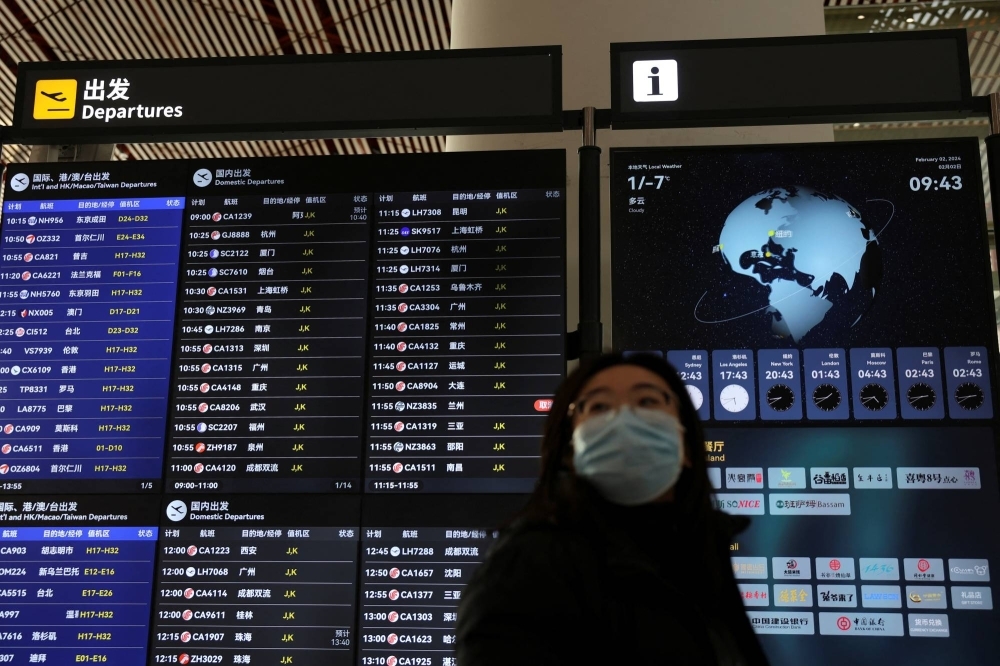
While many Chinese tourists are expected to arrive in Japan during the Lunar New Year holiday beginning this Saturday, the number will most likely not reach pre-pandemic levels despite it being the first new year since the lifting of a Chinese ban on group tours to Japan.
While the number of inbound tourists remains on an upward trend, resulting in various parts of the country experiencing overtourism, those from China have remained low in comparison with previous years since Japan opened its borders in October 2022.
In 2019, the 9.5 million visitors from China made up the highest proportion of inbound tourists. But in 2023, there were only around 2.5 million Chinese visitors, a significantly smaller number than those from other parts of East Asia such as South Korea and Taiwan.
The low turnout was partially due to China's ban on group tours to Japan, but even after its lifting in August last year, the recovery has been slow, keeping the number of Chinese tourists at its lowest in recent years. There were only around 40% as many Chinese tourists in Japan in December as there were in the same month of 2019.
Even with the approaching Lunar New Year, flights to and from China remain only around 60% of pre-pandemic levels, Toriumi said. For Japanese airlines plying such routes, the figure is even lower, at around half, he said.
The Japan Association of Travel Agents (JATA) could not provide an estimate of tourist numbers from China during the Lunar New Year, but it noted that the number of visas issued to Chinese citizens to visit Japan had remained relatively low so far this year.
“The Japan consulate in Shanghai has said that the number of visas issued recently is only half of that issued around the same time in 2019,” said Miho Kuwana, a public relations official at JATA. “The number of visas issued usually goes up around long holidays such as the Lunar New Year.”
Both Toriumi and Kuwana pointed to visa-exemption agreements struck recently between China and countries such as Singapore, Malaysia and Thailand as being a key factor for the lower-than-expected turnout of Chinese tourists in Japan during the upcoming holiday.
The agreements allow holders of Chinese passports to travel visa-free to these countries for up to 30 days — a perk not available in many other countries, including Japan — making them more attractive destinations.
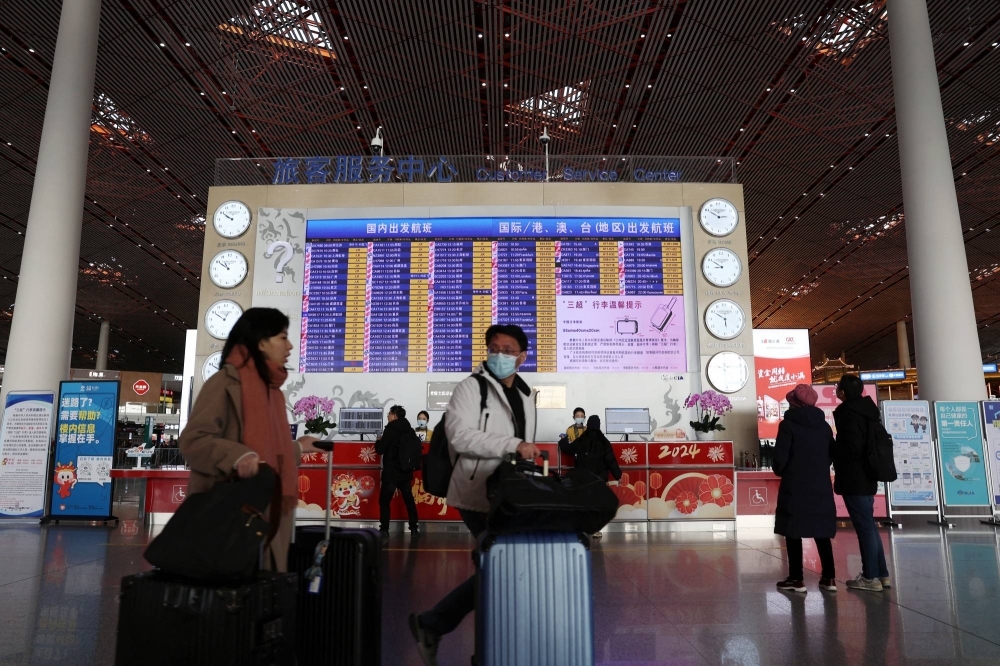
Last year's release of treated wastewater from the crippled Fukushima nuclear power plant is likely to still figure in Chinese nationals' travel decisions as well, according to Toriumi.
Meanwhile, the demographics of Chinese tourists visiting Japan appear to be changing and will most likely continue to evolve over time.
“The people coming from China these days are ones who already are knowledgeable about Japan and tend to be from a higher income bracket, meaning that they will do some (higher-end) shopping, stay at luxury hotels and (for example) go on adventure travels to Hokkaido,” Toriumi said. He noted that in contrast with the period leading up to 2019 when group tours were common, these days, there were more individual tourists with money to spend.
Nevertheless, Japan might not be in any rush to woo Chinese tourists, especially large tour groups that require an overwhelming number of buses to be rented out and hotel rooms to be booked, since the Japanese tourism industry is already struggling with a labor shortage.
Furthermore, many parts of the country are looking for ways to combat overtourism, with tourist numbers from other countries continuing to skyrocket.
“It obviously depends on the region, but we still hear about hotels and lodges that are unable to open up all of their rooms, due to them being short-staffed,” said Tomokage Nakayama, an official at the Japan National Tourism Organization (JNTO).
Much like JATA, JNTO too finds it difficult to estimate the influx of Chinese tourists over the Lunar New Year.
“(The inbound tourism market from) China is definitely still on the way to recovery but (the Lunar New Year) will be one opportunity,” said Nakayama. “Although an immediate return to pre-pandemic levels is impossible, we do expect some increase.”

In a time of both misinformation and too much information, quality journalism is more crucial than ever. By subscribing, you can help us get the story right.
Japan 'two-faced' for seeking closer ties while warning of China threat, Chinese state media says
- Medium Text

Sign up here.
Reporting by Liz Lee, Beijing and Shanghai newsrooms; Additional reporting by John Geddie in Tokyo. Editing by Gerry Doyle
Our Standards: The Thomson Reuters Trust Principles. New Tab , opens new tab

Kiribati's parliament has voted to remove Australian-born High Court Judge David Lambourne, who said on Friday the move was politically motivated and an attack on the independence of the Pacific Island nation's judiciary.
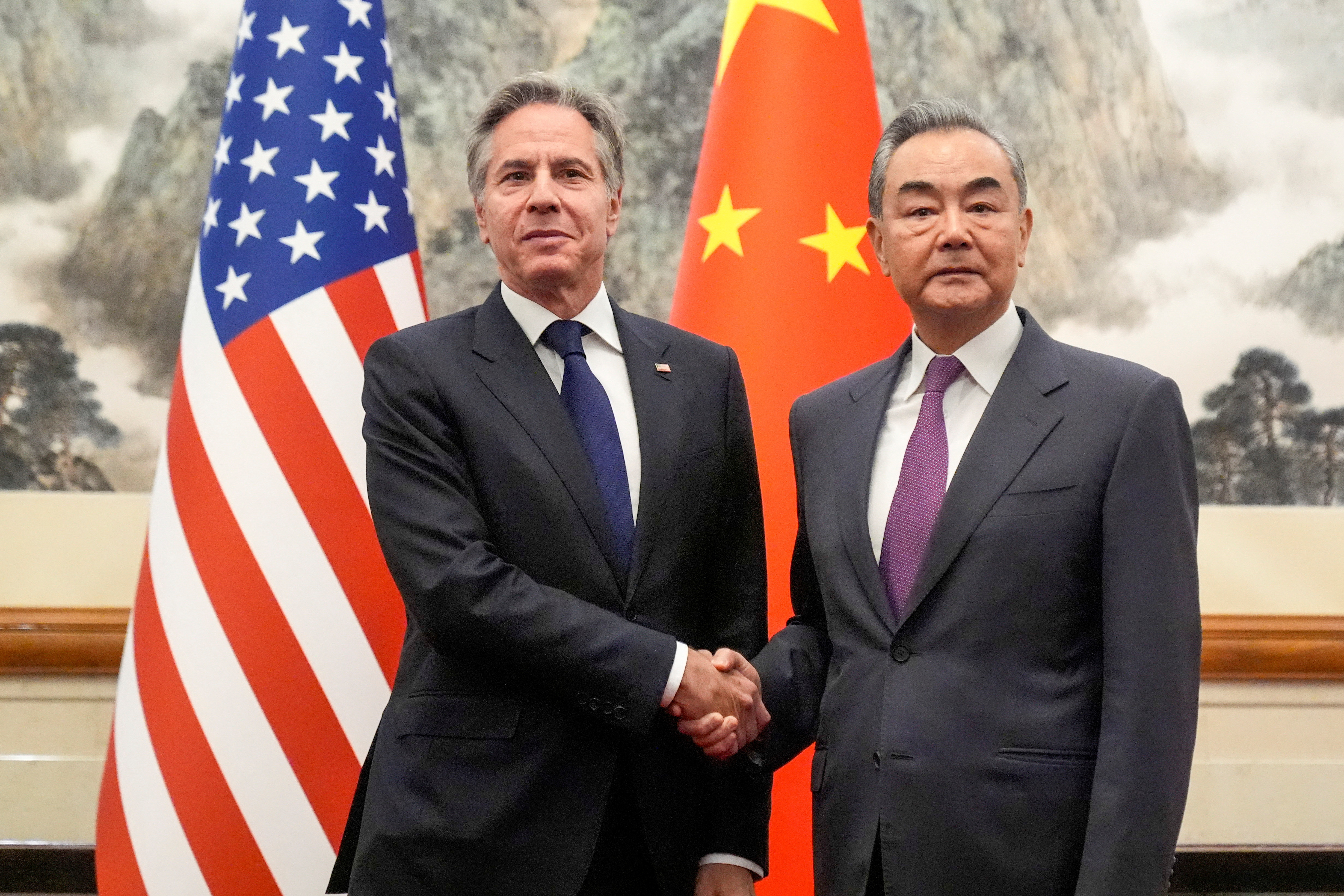
World Chevron

USC cancels main commencement, citing safety measures
The University of Southern California (USC) said on Thursday it has called off its main-stage graduation ceremony this year, one week after canceling the valedictorian speech by a Muslim student who said she was silenced by anti-Palestinian hatred.

A Ukrainian court ordered Agriculture Minister Mykola Solsky to be taken into custody on Friday to face allegations of his alleged involvement in an illegal acquisition of state-owned land worth about $7 million.

- Share full article
Advertisement
Supported by
Biden and Kishida Agree to Tighten Military and Economic Ties to Counter China
President Biden is hosting Japan’s prime minister, Fumio Kishida, for a state visit as part of a broad diplomatic outreach.

By Peter Baker and Michael D. Shear
Reporting from the White House Rose Garden
President Biden and Prime Minister Fumio Kishida of Japan announced a range of moves on Wednesday to further enhance military, economic and other cooperation between the two longtime allies as part of the president’s efforts to counter China’s aggressive actions in the Indo-Pacific region.
During a pomp-filled ceremony honoring the visiting Japanese prime minister, the president said the United States and Japan would create an expanded defense architecture with Australia, participate in three-way military exercises with Britain and explore ways for Japan to join a U.S.-led coalition with Australia and Britain.
Mr. Biden also announced that the United States would take a Japanese astronaut to the moon as part of NASA’s Artemis program, which would be the first time a non-American has set foot on the moon.
“This is the most significant upgrade of our alliance since it was first established,” Mr. Biden said at a news conference in the White House Rose Garden along with the prime minister.
Mr. Kishida made a point of reaffirming Japan’s “strong support for Ukraine” in its war against Russia, a key priority for Mr. Biden, and framed the European conflict in terms of the precedent it could set in Japan’s neighborhood. “Ukraine today may be East Asia tomorrow,” Mr. Kishida said.
Biden Hosts Japan’s Prime Minister at the White House
President biden called the united states and japan “the closest of friends” during a welcoming ceremony for prime minister fumio kishida..
Just a few generations ago, our two nations were locked in a devastating conflict. It would have been easy to say we remain adversaries. Instead, we made a far better choice: We became the closest of friends. Mr. Prime Minister, Mr. Kishida, welcome back to the White House.

Mr. Biden’s statements on Wednesday fit into a long history of American presidents declaring that the U.S.-Japan relationship was the most important bilateral alliance in the world.
In preparation for the state visit, Mr. Biden’s aides described the closer military link as one of the biggest upgrades of the U.S.-Japan Security Treaty, which dates back to early 1960, an Eisenhower-era innovation to turn a former World War II enemy into what later presidents called America’s “biggest aircraft carrier in the Pacific.”
There has always been a bit of hyperbole to the statement. But as the perceived threat from China has grown, Japan has been the linchpin of broader U.S. efforts to unify its separate allies in the region — especially South Korea and the Philippines — into a coordinated force.
The prime minister’s visit comes at the same time Mr. Biden is strengthening the American partnership with the Philippines, which also finds itself the target of a mounting Chinese military presence in the South China Sea. On Thursday, Mr. Biden and Mr. Kishida will meet with President Ferdinand Marcos Jr. of the Philippines to demonstrate their joint commitment.
The day began with a welcoming ceremony on the South Lawn, where Mr. Biden hailed the relationship between the United States and Japan as a “cornerstone of peace, security, prosperity” and said that President Eisenhower’s promise of an “indestructible partnership” had been achieved.
“Just a few generations ago, our two nations were locked in a devastating conflict,” Mr. Biden said after he and Mr. Kishida watched a procession of U.S. military honor guards upon the prime minister’s arrival at the White House. “It would have been easy to say we remain adversaries. Instead, we made a far better choice: We became the closest of friends.”
The Biden administration signaled the importance of its relationship with Tokyo by holding an official state dinner on Wednesday evening in honor of Mr. Kishida, something reserved for America’s closest allies.
The visit comes amid hand-wringing in Washington and Tokyo over the possibility of a return to power by former President Donald J. Trump, whose unpredictable foreign policy kept many world leaders on edge. One goal for Mr. Biden, officials said, is to create as much permanence in the Japanese relationship as possible before the election in November.
One administration official, speaking on the condition of anonymity to discuss the upcoming meeting, said there was “anxiety in capitals” around the world, including in Tokyo, about whether Mr. Trump would continue the international engagement that Mr. Biden and prior presidents have embraced. Another official said there was a real risk that Mr. Trump, if re-elected, could move to undo what the leaders of the two countries announced on Wednesday.
Mr. Biden and Mr. Kishida outlined greater coordination and integration between the military forces of both countries, including the formation of a joint defense council that could support more defense-related exports of equipment produced in Japan. And officials agreed on new cooperation on ventures in space and collaboration between research institutions working on artificial intelligence, semiconductors and clean energy.
“The American alliance system has helped bring peace and stability to the Indo-Pacific for decades, and now we need to update and upgrade that alliance network for the modern age,” said Jake Sullivan, the White House national security adviser. “It goes way beyond security. It’s economics. It’s technology. It’s infrastructure development. And it’s diplomacy. And that’s all going to be on display in the meeting with the prime minister.”
Rahm Emanuel, the United States ambassador to Japan, called the meeting a chance for the two nations to go beyond America’s work to protect Japan and to “write the first chapter of the next era” of cooperation as they work together to project power throughout the region.
That would be a more far-reaching relationship than the United States has historically had with Japan, which for decades after World War II restricted its spending on defense and its engagement around the world.
That began to change during the past several years, under Mr. Kishida, who pushed to expand defense spending and participate in global efforts like the sanctions on Russia for its invasion of Ukraine. Administration officials said Japan’s new willingness to become a full partner with the United States on the global stage has taken the alliance between the two countries to a new level.
But there are still some tensions. The two leaders had to dance carefully around Mr. Biden’s reluctance to let a Japanese firm buy a storied U.S. steel maker. That struck national security experts as strange, since such deals are usually blocked only when they give critical technology to adversaries, not allies.
“The idea that you block the acquisition of a company by one of your closest allies makes no sense in alliance-building terms,” said Joseph S. Nye Jr., an emeritus professor at Harvard who designed many of the defense cooperation strategies with Japan in the Clinton administration.
The meeting on Thursday between Mr. Biden, Mr. Kishida and Mr. Marcos represents a more aggressive effort by the United States and its allies to isolate China — rather than allowing the Chinese leadership to intimidate and isolate its neighbors in the South China Sea and elsewhere.
The Thursday meeting will be the first time that the leaders of the three nations have met together, officials said.
“We’re continuing to deepen our cooperation with our closest partners to ensure what we’ve talked about many times from this podium and elsewhere: a free, open and prosperous Indo Pacific,” Mr. Sullivan told reporters during a briefing at the White House on Tuesday.
Mr. Sullivan declined to say whether Mr. Biden would raise with Mr. Kishida the issue of plans by Nippon Steel, a Japanese corporation, to acquire U.S. Steel , the struggling manufacturer based in Pittsburgh. Mr. Biden has publicly said that he will have “the backs” of union steel workers, indicating his opposition to the deal.
“You guys all know Joe Biden,” he said. “You’ve seen Joe Biden. He’s been very clear that he’s going to stand up for American workers. He’s going to defend your interests. He’s also been very clear that he is going to make sure that the U.S.-Japan alliance is the strongest it’s ever been.”
But administration officials said later on Tuesday that they did not think the subject would come up between the two leaders on Wednesday because both men already know the position of the other.
Mr. Biden greeted Mr. Kishida on Tuesday evening for a brief arrival at the White House. Later, the two leaders and their wives went to BlackSalt, an upscale seafood restaurant in Washington, for a more casual dinner ahead of the formal events on Wednesday.
White House officials said the couples had exchanged a series of gifts on Tuesday evening, a diplomatic tradition for such events. The official gift from Mr. Biden and Jill Biden, the first lady, was a three-legged table that was handmade by a Japanese American-owned company in Pennsylvania.
Other gifts included a lithograph and a two-volume LP set autographed by Billy Joel and a vintage vinyl record collection. Dr. Biden gave Ms. Kishida a framed painting of the Yoshino cherry tree that the two had planted on the South Lawn last spring, and a soccer ball signed by the U.S. women’s national soccer team and the Japanese women’s team.
At the state dinner, the White House was scheduled to serve a meal that would include house-cured salmon and dry-aged rib-eye steak with blistered shishito pepper butter.
David E. Sanger contributed reporting.
An earlier version of this article misstated which countries belong to a security pact that Japan may join. Its members are the United States, Australia and Britain, not the United States, Australia and New Zealand.
Because of an editing error, an earlier version of a home page headline with this article misstated the surname of Japan’s prime minister. He is Fumio Kishida, not Fushida.
How we handle corrections
Peter Baker is the chief White House correspondent for The Times. He has covered the last five presidents and sometimes writes analytical pieces that place presidents and their administrations in a larger context and historical framework. More about Peter Baker
Michael D. Shear is a White House correspondent for The New York Times, covering President Biden and his administration. He has reported on politics for more than 30 years. More about Michael D. Shear
- GO Advanced search
- MENA - ENGLISH
- UAE - ENGLISH
- KSA - ENGLISH
- الشرْقُ الأوسَط
- Special Coverage
- Corporate Earnings
- UAE Realty Market
- Gaza-Israel Conflict
- Russia-Ukraine Crisis
- The Future of Cryptos
- AI: Shaping Digital Future
- Middle East
- Indian Sub-continent
- China and Asia Pacific
- UK and Europe
- North Africa
- Islamic Finance
- Islamic Business
- Islamic Finance Reports
- Islamic Finance Glossary
- Ramadan and Eid 2024
- COP28: Talking Climate in UAE
- Focus: Global Wealth Funds
- Banking & Insurance
- Hospitality
- Manufacturing
- Real Estate
- Retail & Consumer
- Technology and Telecom
- Transport and Logistics
- Travel and Tourism
- Commodities
- Fixed Income
- Alternative Investments
- Wealth Management
- Sustainability
- Business Insights
- Crime and Security
- Immigration
- Regulations
- Entertainment
- Leisure & Travel
- Construction
- Oil & Gas
- Green Press Releases
- Companies News
- Government News
- People in the News
- Research & Studies
- Events and Conferences
- Africa Press Releases
- Asia Press Releases
Japan town to block Mount Fuji view from troublesome tourists

An official from Fujikawaguchiko town said Friday
A huge black barrier to block Mount Fuji from view will be installed in a popular photo spot by Japanese authorities exasperated by crowds of badly behaved foreign tourists.
Construction of the mesh net -- 2.5 metres (8 feet) high and the length of a cricket pitch at 20 metres -- will begin as early as next week, an official from Fujikawaguchiko town said Friday.
"It's regrettable we have to do this, because of some tourists who can't respect rules," leaving litter behind and ignoring traffic regulations, he told AFP.
It is the latest direct action in Japan against overtourism after residents of Kyoto's geisha district banned visitors from small private alleys this year.
Record numbers of overseas tourists are travelling to the country, where monthly visitors exceeded three million in March for the first time ever.
Mount Fuji, Japan's highest mountain, can be photographed from many spots in the resort town of Fujikawaguchiko.
But this viewpoint is particularly popular because the majestic volcano appears behind a Lawson convenience store, which are ubiquitous in Japan.
Due to this visual juxtaposition, "a reputation has spread on social media that this spot is very Japanese, making it a popular photo location," said the town official who declined to be named.
The mostly non-Japanese tourists are overcrowding a stretch of pavement next to the Lawson shop, he said.
After traffic signs and repeated warnings from security guards fell on deaf ears, the town in Yamanashi region decided on the huge screen as a last resort.
The measure is also meant to protect a nearby dental clinic against the onslaught of tourists.
They sometimes park there without permission and have even been seen climbing on the roof of the clinic to get the perfect shot, the official said.
The town wishes it hadn't come down to this, he said, adding that the current plan is for the screen to be maintained until the situation improves.
Tourism to Japan has been booming since pandemic-era border restrictions were lifted, and the government has been working hard to boost visitor numbers.
But this has not been universally welcomed -- including in Kyoto where locals have complained of snap-happy tourists harassing the city's immaculately dressed geisha.
And this summer, hikers using the most popular route to climb Mount Fuji will be charged $13 each, with numbers capped to ease congestion.
Other top destinations worldwide are also struggling with visitor numbers, and on Thursday Venice began charging day-trippers for entry to tackle mass tourism.
Disclaimer: The content of this article is syndicated or provided to this website from an external third party provider. We are not responsible for, and do not control, such external websites, entities, applications or media publishers. The body of the text is provided on an “as is” and “as available” basis and has not been edited in any way. Neither we nor our affiliates guarantee the accuracy of or endorse the views or opinions expressed in this article. Read our full disclaimer policy here .
© ZAWYA 2024
DISCOVER MORE
Thailand's bangkok bank cuts retail loan rates by 25 bps.
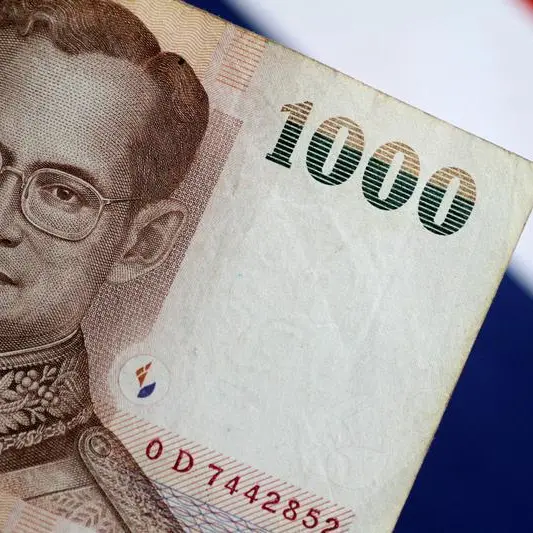
Australian dollar gains on rate hike jitters, yen selling

Singapore c.bank sees inflation "falling more discernibly" in Q4
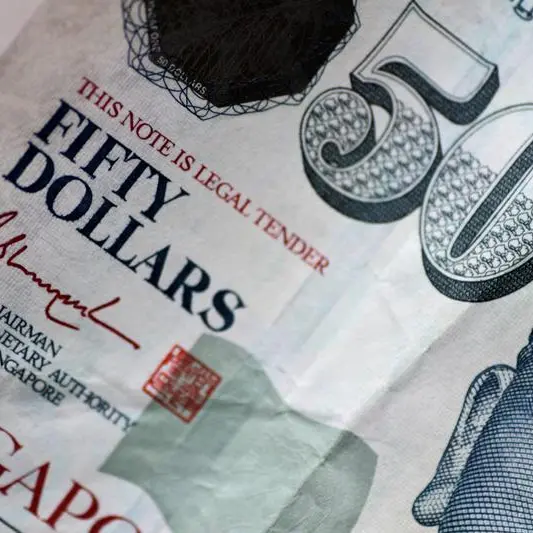
The glitch in Japan's plans to bolster U.S. defence
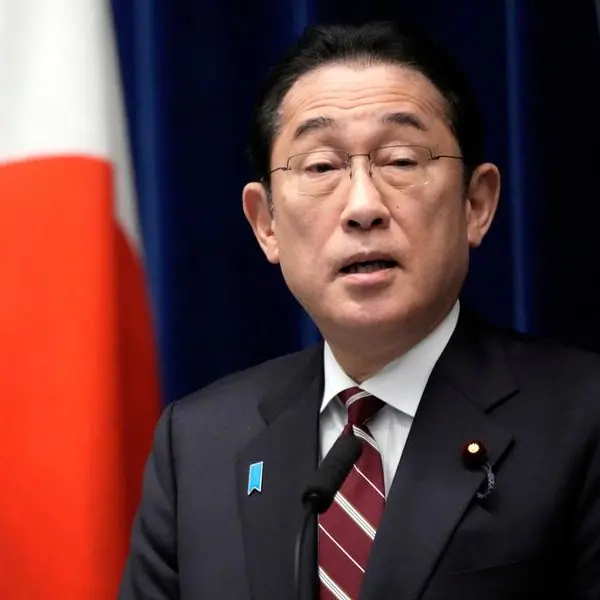
Yen falls further as Bank of Japan stands pat on rates
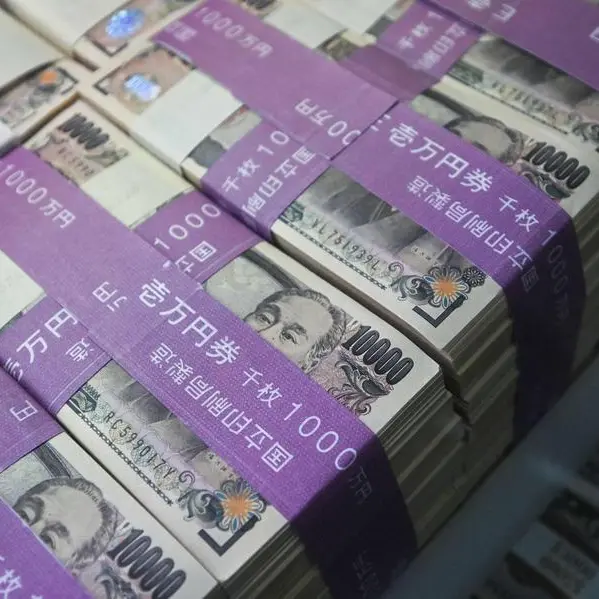
China warns Blinken over deteriorating ties in talks
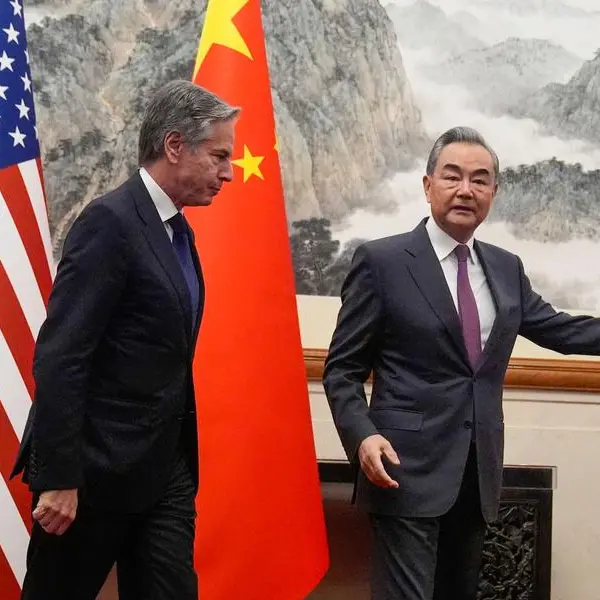
Weak yen pressures Bank of Japan interest rate decision
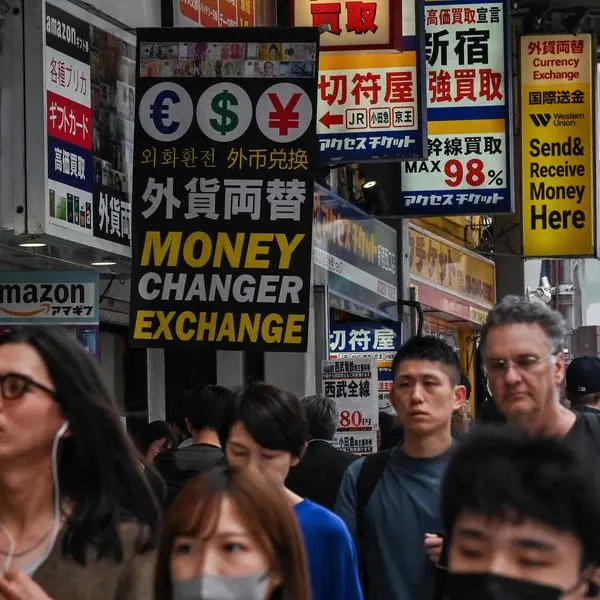
China sends astronauts to Chinese space station for six-month stay
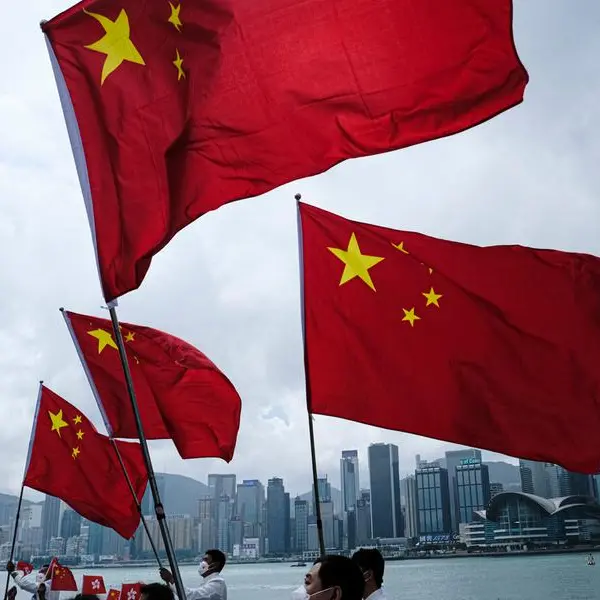
INTERVIEW: Kuwait’s AlShaya Group CEO says hostility to US brands has receded; negligible impacts due to floods
Galfar says jv bags $1.35bln design-build contract for abu dhabi-sohar rail link, uae’s adq sets up $500mln investment accord with kenya, saudi pif-backed rvcmc selects xpansiv to launch carbon credit exchange, qatar firm baladna signs $3.5bln deal with algeria to develop ‘world’s largest’ dairy farm project, japan visitors exceed 3mln in march, a monthly record, tourism agency says, japan saw record 2.79mln visitors in february due to lunar new year boost, japan receives more than 2.6mln visitors in january, japan top chinese new year destination for filipinos, japan e-visa for uae residents: costs, documents, eligibility explained, leadership talks.

LATEST VIDEO
Video: expect more extreme weather threats like uae floods worldwide – climate expert.

ZAWYA NEWSLETTERS
Get insights and exclusive content from the world of business and finance that you can trust, delivered to your inbox.
Subscribe to our newsletters:
DAILY WEEKLY GREEN PROJECTS AFRICA
ZAWYA COVERAGE
Uae’s bayanat, yahsat shareholders approve merger to create space42.

Dubai-listed Mashreq’s Q1 2024 net profit surges to $544mln
87% of saudi vision 2030 initiatives now complete, on track, most uae investors bet on ai for huge returns - survey, vietnam delays launch of new stock trading system, water shortages, traffic aggravate india's bengaluru as it votes, us to announce new restrictions on firearm exports, official says, india's top court declines to order any change to vote-counting process, the bri report, china’s flagship global infrastructure initiative is changing in the face of potent headwinds.

- Election 2024
- Entertainment
- Newsletters
- Photography
- Personal Finance
- AP Investigations
- AP Buyline Personal Finance
- AP Buyline Shopping
- Press Releases
- Israel-Hamas War
- Russia-Ukraine War
- Global elections
- Asia Pacific
- Latin America
- Middle East
- Election Results
- Delegate Tracker
- AP & Elections
- Auto Racing
- 2024 Paris Olympic Games
- Movie reviews
- Book reviews
- Personal finance
- Financial Markets
- Business Highlights
- Financial wellness
- Artificial Intelligence
- Social Media
North Carolina welcomes a historic visitor in Japan’s Prime Minister Kishida
Japanese Prime Minister Fumio Kishida is cementing economic links and cultural amity with North Carolina after a visit to Washington focused on global security issues. His visit included a historic lunch at the governor’s mansion with Gov. Roy Cooper.
North Carolina first lady Kristin Cooper, North Carolina Gov. Roy Copper, Japan Prime Minister Fumio Kishida and Japan first lady Yuko Kishida pose for a photograph before attending a luncheon at the North Carolina Executive Mansion, Friday, April 12, 2024, in Raleigh, N.C. (Robert Willett/The News & Observer via AP, Pool)
- Copy Link copied
Japan Prime Minister Fumio Kishida addresses a luncheon in his honor at the North Carolina Executive Mansion, Friday, April 12, 2024, in Raleigh, N.C. (Robert Willett/The News & Observer via AP, Pool)
Japanese Prime Minister Fumio Kishida, left, and North Carolina Gov. Roy Cooper, back left, tour the assembly building during a visit to the Honda Aircraft facility in Greensboro, N.C., Friday, April 12, 2024. (AP Photo/Chuck Burton)
Japanese Prime Minister Fumio Kishida, second from right, walks through the assembly building during a visit to the Honda Aircraft facility in Greensboro, N.C., Friday, April 12, 2024. (AP Photo/Chuck Burton)
Roy Cooper, Governor of North Carolina and Kristin Cooper, arrive at the Booksellers area of the White House for the State Dinner hosted by President Joe Biden and first lady Jill Biden for Japan’s Prime Minister Fumio Kishida, and wife Kishida Yuko, Wednesday, April 10, 2024, in Washington. (AP Photo/Jacquelyn Martin)
Japan’s Prime Minister Fumio Kishida addresses a joint meeting of Congress in the House chamber, Thursday, April 11, 2024, at the Capitol in Washington. (AP Photo/Jose Luis Magana)
North Carolina Gov. Roy Cooper addresses a luncheon in honor of Japan Prime Minister Fumio Kishida at the North Carolina Executive Mansion, Friday, April 12, 2024, in Raleigh, N.C. (Robert Willett/The News & Observer via AP, Pool)
Japan first lady Yuko Kishida, center, is flanked by Prime Minister Fumio Kishida, left and Shigeo Yamada, Japan Ambassador to the United States, during a luncheon in honor of the Prime Minister at the North Carolina Executive Mansion, Friday, April 12, 2024, in Raleigh, N.C. (Robert Willett/The News & Observer via AP, Pool)
RALEIGH, N.C. (AP) — Japanese Prime Minister Fumio Kishida cemented economic links and cultural amity with North Carolina on Friday, following up time in Washington during his official U.S. visit by checking up on benchmark Japanese companies building in the ninth-most populous state and meeting with students.
In between, Kishida lunched at the governor’s mansion in Raleigh, a historic first for the head of a foreign country in the Tar Heel state. Japan is North Carolina’s largest source of foreign direct investment, where over 200 Japanese companies have now set up shop, employing over 30,000 people, according to Democratic Gov. Roy Cooper and his office.
“I am honored to be here in North Carolina to showcase the multilayered and strong ties between Japan and the United States,” Kishida said through a translator, inside the mansion ballroom, where about 60 people listened. The guest list included Democratic state Attorney General Josh Stein, Republican state House Speaker Tim Moore and executives of several Japanese and American companies in the region.
He called North Carolina “a state at the forefront of the times” and flexed his knowledge about its landmarks, mentioning Kill Devil Hills, where the Wright Brothers had their first successful flight, as an example of the state’s ingenuity.
Until now, Kishida’s trip to the U.S. had been focused on global safety. He met President Joe Biden to discuss security concerns about China’s military, participated in the first trilateral summit between the U.S., Japan and the Philippines, and made the case in an address to a joint session of Congress for the U.S. to remain involved in global security.
But Kishida, who has been Japan’s prime minister since 2021, said before his trip that he chose to stop in North Carolina to show that the Japan-U.S. partnership extends beyond Washington, according to a translation posted on his website.
Kishida, Cooper and others traveled to the Greensboro area for Friday morning visits to a Honda Aircraft Co. production facility, as well as to the construction site for a Toyota Motor Corp. electric and hybrid battery plant that is expected to ultimately employ more than 5,000 people.
Hours before Kishida and his wife arrived Thursday night at Raleigh-Durham International Airport, a subsidiary of another Japanese company, Fujifilm, announced an additional $1.2 billion investment in its upcoming biopharmaceutical manufacturing plant and another 680 jobs.
Chiaki Takagi, a Japanese studies lecturer at the University of North Carolina Greensboro, said this week that the prime minister’s visit surprised her but that it could signal a “positive future partnership” between Japan and the U.S. and more Japanese workers coming to the state.
“This whole thing will provide the area with opportunities to be engaged in very active cultural exchange between Japan and the U.S.,” Takagi said.
The luncheon marked the first time a foreign head of state has visited the governor’s mansion since record-keeping began in 1891, the state Department of Natural and Cultural Resources said.
“What a better way to start than with one of our closest allies and friends from the country of Japan, with whom we share so many common interests,” Cooper said at the luncheon. “So today we make history, welcoming our wonderful friends.”
Cooper has a history of visiting Japan, making two trips to Tokyo in 2017 and 2023 during his time as governor. When it was announced Kishida was coming to the U.S., Rahm Emanuel, U.S. ambassador to Japan, said during the luncheon Cooper was the first to call to ask for the prime minister to visit his state.
Guests dined on a three-course meal prepared by James Beard award-winning Raleigh chef Ashley Christensen, which included wagyu beef tenderloin and Carolina Gold Rice pudding. Meanwhile, additional members of the Japanese delegation and the governor’s staff listened to live bluegrass music as they ate barbeque.
Kishida, Cooper and others went to North Carolina State University in Raleigh later Friday, where they met students ranging from those in middle school to adults studying Japanese. They visited the university’s Japan Center, which was established by former Gov. Jim Hunt and others in 1980 following a state trade mission to Tokyo. North Carolina State also has long, formal ties with Japan’s Nagoya University.
Earlier Friday, Kishida’s wife, Yuko, and North Carolina first lady Kristin Cooper shared a traditional Japanese tea at Sarah P. Duke Gardens in Durham.
Associated Press writer Gary D. Robertson in Raleigh contributed to this report.

IMAGES
VIDEO
COMMENTS
Japan has restored the visa-waiver system from October 11th, 2022.If your country is in the list of Exemption of Japan Visa like Australia, Canada, USA, UK and almost all European nations, you can visit Japan without applying for a visa in advance.. China has officially announced resumption of all visas including tourist visas (L visas) from March 15th, 2023.
TOKYO, May 17 (Reuters) - Visitors to Japan rose to a post-pandemic high of almost 2 million in April, official data showed on Wednesday, benefiting from a relaxation of travel restrictions in China.
Sep 20, 2023. The number of foreign visitors to Japan recovered to 86% of pre-pandemic levels in August with Chinese tourists adding a boost, according to the National Tourism Organization. The ...
2:58. The number of foreign visitors to Japan recovered to 86% of pre-pandemic levels in August with Chinese tourists adding a boost, according to Japan's National Tourism Organization. The ...
Dec 27, 2022. Japan will tighten its border controls for travelers from China on Friday, as the latter nation is seeing a surge in COVID-19 infections, Prime Minister Fumio Kishida said Tuesday ...
HIROMOTO DEGUCHI, Nikkei staff writer January 13, 2023 10:45 JST. TOKYO -- The end of China's zero-COVID policy signaled the possibility of a renewed influx of Chinese travelers to Japan, but it ...
But since Japan eased its own pandemic border controls late last year, the number of Chinese tourists has only recovered to about 20% of 2019 levels, partly because of China's delay in adding ...
Chinese travelers are a lifeline for the Japanese tourism industry. In 2019, some 31.9 million foreign tourists visited Japan, and almost 53 percent of them were from China's mainland or the special administrative regions of Hong Kong and Macau, or Taiwan province, according to the Japan National Tourism Organization. Tourists coming from the ...
Almost 10 million Chinese visited in 2019, five times the number of Americans who went to Japan. Because of their numbers, they contributed the most to the Japanese economy, though visitors from Australia and some other countries spent more per visitor. According to Ctrip, the Chinese online travel giant, the top activities for Chinese visitors ...
Goldman Sachs said Chinese tourists, who made up 30% of foreign visitors to Japan in 2019, could return only in the second quarter of 2023. Once China fully reopens, inbound spending from Chinese ...
The lifting is expected to be a boon to Japan's tourism industry as China topped both in tourist numbers and visitor spending before the pandemic. Chinese group tours to Japan have been on hold ...
TOKYO -- The Japanese hospitality industry's recovery from COVID-19 has reached a standstill, despite government travel incentives and an increase in foreign tourists, as travelers from China ...
As a general rule, tourist visits to Japan by Chinese nationals take the form of "group tours" based on the related laws and regulations of China (period of stay is up to 15 days). If you are coming to Japan as part of a tour group operated by a tour escort through the approved Chinese travel agency, the Chinese travel agency will apply for a ...
Kyodo. Sep 29, 2023. Beijing -. Japanese airlines' flights from China to Japan are almost fully booked during an eight-day holiday that began Friday, the airlines said, despite Chinese media ...
TOKYO -- The Chinese government released a new list of destination countries for outbound group tourism, including Japan, South Korea, Australia, the U.S. and the U.K. on Thursday, a move that ...
In 2019, Japan's single biggest tourism market was neighboring China, with 9.25 million Chinese visiting. Now, though, China remains essentially sealed off from the rest of the world.
For instance, Chinese travelers made up 28 percent of inbound tourism in Thailand, 30 percent in Japan, and 16 percent of non-EU visitors to Germany. 8 United Nations World Tourism Organization (UNWTO) database. Leisure travel was the biggest driver of China's outbound travel, representing 65 percent of travelers in 2019.
10 days, two weeks, or even one month of travel to China or Japan can really add to your travel budget. Accommodation is often cheaper in China compared to Japan ($34 vs. $58). Budget travelers usually stay in less expensive hostels and guest houses, while nicer hotels often appeal to families and upscale travelers.
Currently, Japan has international flights to over 150 cities worldwide. A direct flight from Japan to China takes only 2 - 4 hours. Therefore a Japan and China tour is a perfect choice for those who want to explore both countries. 2. For domestic transportation, Japan has a well-developed transportation system with various travel modes.
Visitors totaled 3.1 million in March, up almost 70% from a year earlier, and led by South Korea, Taiwan and China, according to the Japan National Tourism Organization. Tourist numbers from 17 ...
However, Japan overall has more choice. There are roughly 26,000 properties listed on Booking.com for Japan, whereas in China, there are only around 12,250 properties. Both countries have one to five-star hotels available, but China has a lower proportion of one-star hotels and a much higher proportion of five-star hotels.
Amid the post-pandemic recovery, China's tourism sector is rebounding with vigor in 2023. We discuss the resurgence of outbound and domestic travel, evolving traveler behavior, and tech-enabled trends in this article. From cultural exploration to wellness escapes and digital integration, the stage is set for foreign businesses and investors to seize opportunities in this transformed landscape.
Tourism in China is a growing industry that is becoming a significant part of the Chinese economy. The rate of tourism has expanded over the last few decades since the beginning of reform and opening-up. ... Japan: 2,676,334 2,689,662 2,680,033 2,587,440 2,497,657 2,717,600
Feb 8, 2024. While many Chinese tourists are expected to arrive in Japan during the Lunar New Year holiday beginning this Saturday, the number will most likely not reach pre-pandemic levels ...
An editorial in a Chinese state-controlled newspaper on Thursday admonished "two-faced" Japan for inaccurately portraying it as a regional security threat while chasing more stable bilateral ties ...
Mr. Biden's statements on Wednesday fit into a long history of American presidents declaring that the U.S.-Japan relationship was the most important bilateral alliance in the world.
The story of how Momofuku Ando invented instant ramen in a backyard shed in 1958, when food was still scarce, is the stuff of legend in Japan. He went on to found the food giant Nissin Foods.
Data from China's National Immigration Administration showed 141 million total exits and entries in the first quarter of 2024. Foreign nationals accounted for 13 million of those, roughly a ...
japan travel and tourism A huge black barrier to block Mount Fuji from view will be installed in a popular photo spot by Japanese authorities exasperated by crowds of badly behaved foreign tourists. Construction of the mesh net -- 2.5 metres (8 feet) high and the length of a cricket pitch at 20 metres -- will begin as early as next week, an ...
Cooper has a history of visiting Japan, making two trips to Tokyo in 2017 and 2023 during his time as governor. When it was announced Kishida was coming to the U.S., Rahm Emanuel, U.S. ambassador to Japan, said during the luncheon Cooper was the first to call to ask for the prime minister to visit his state.